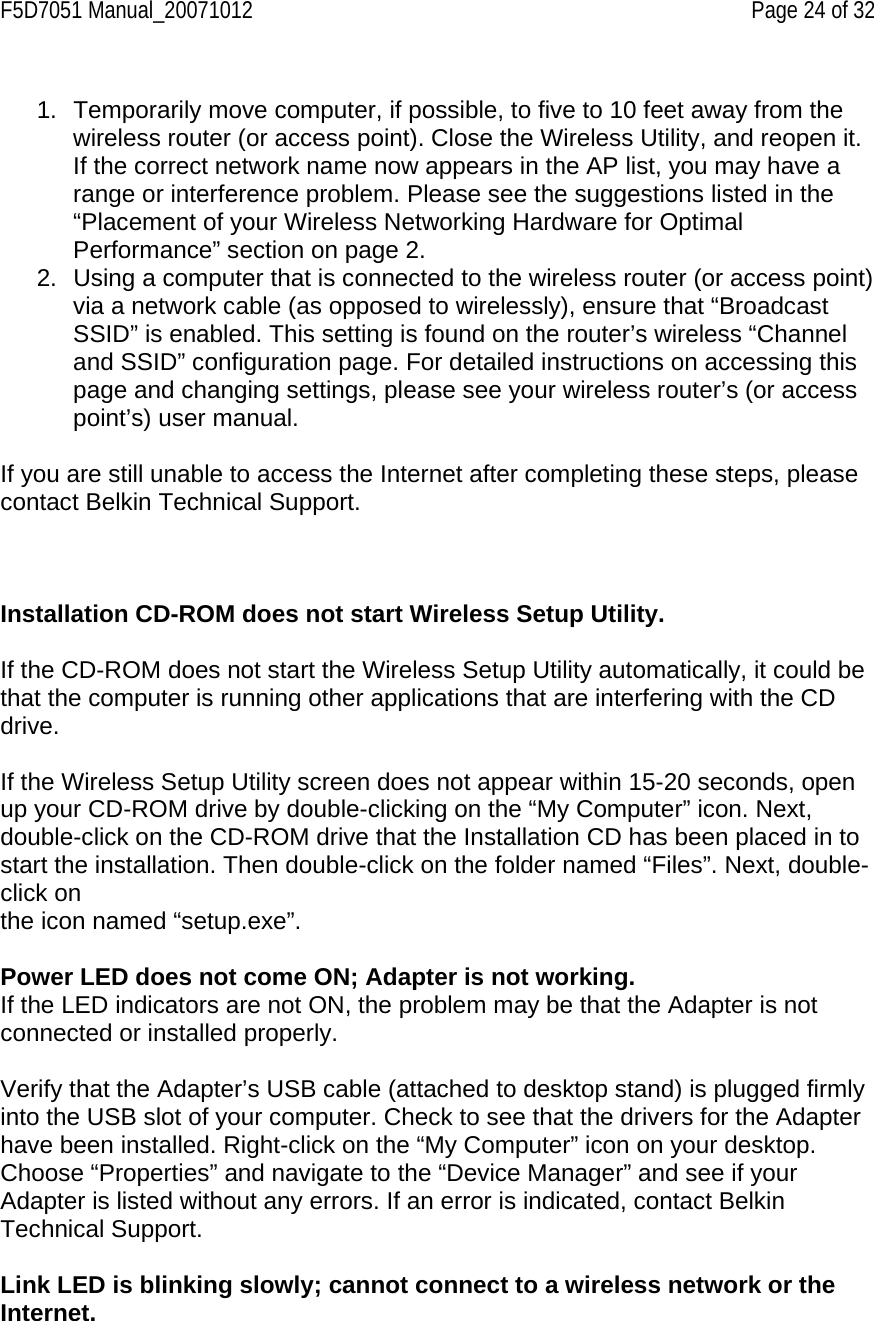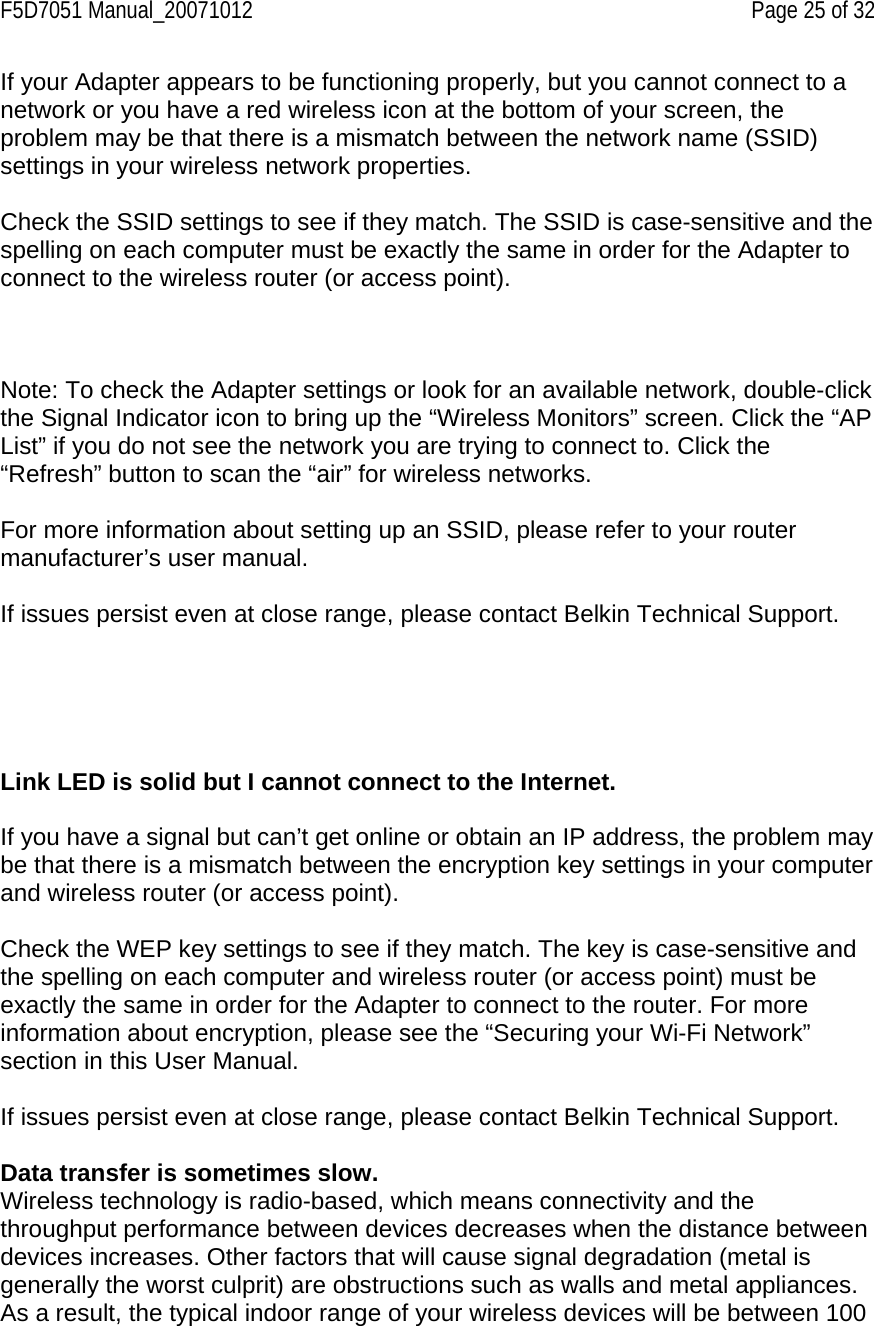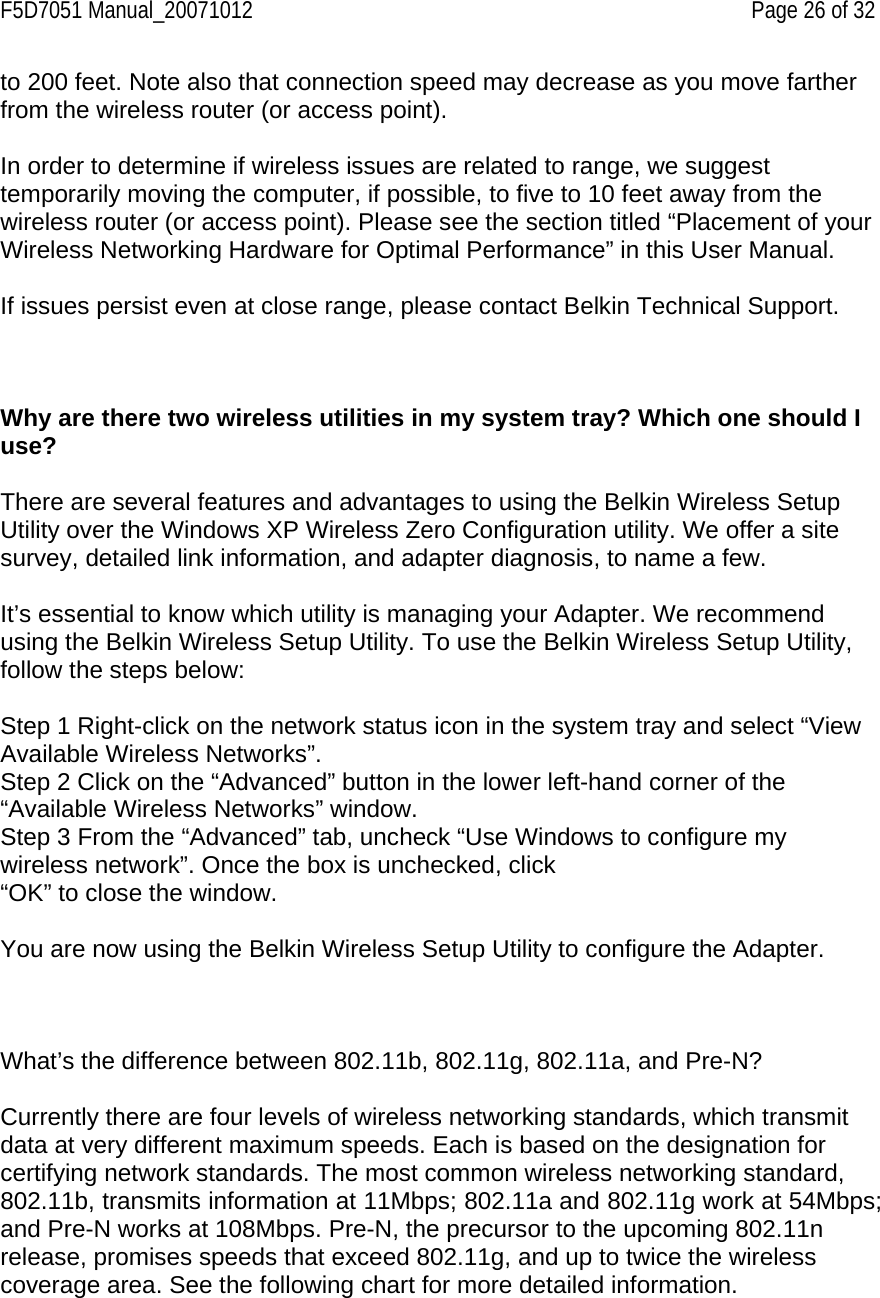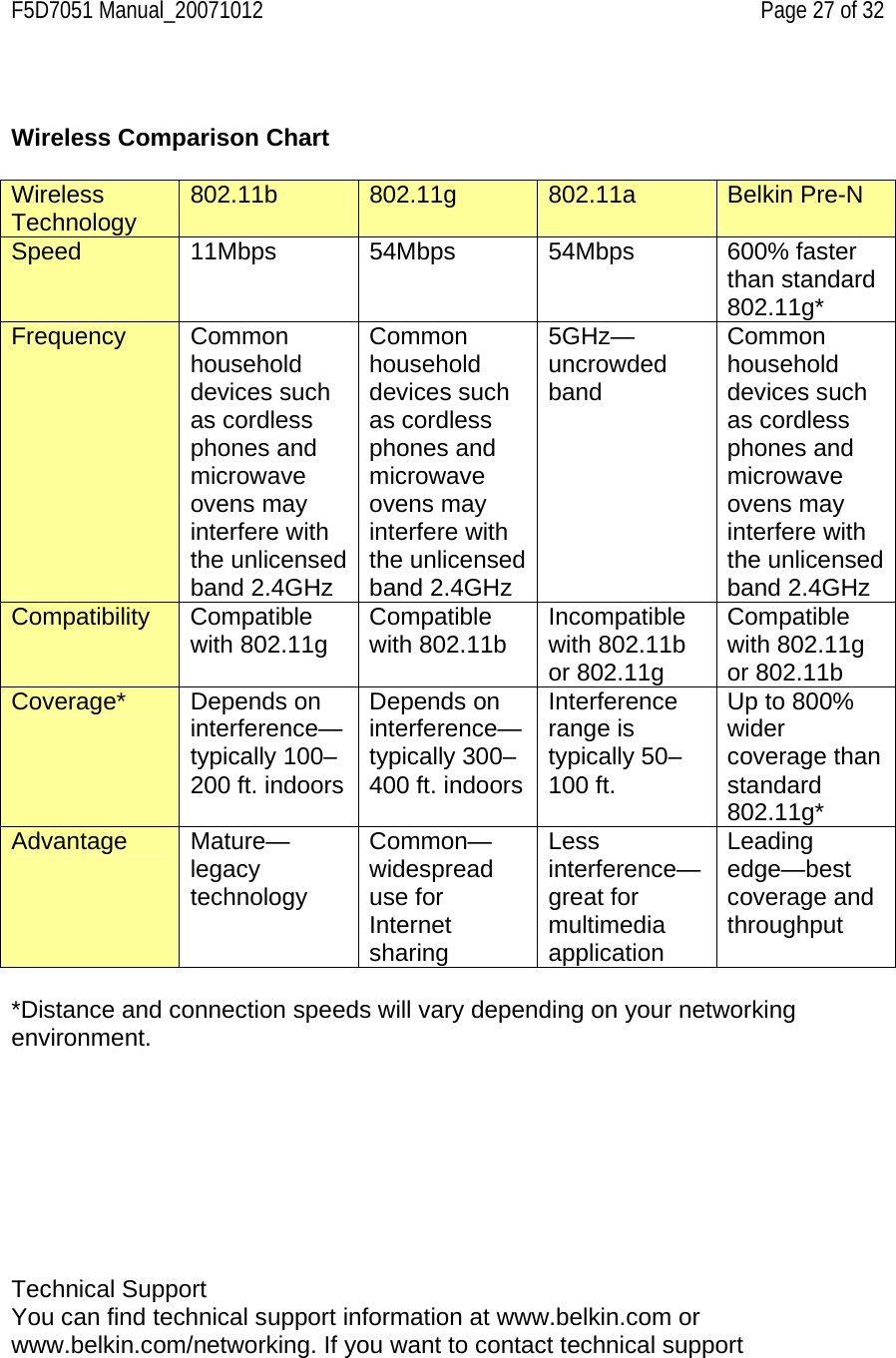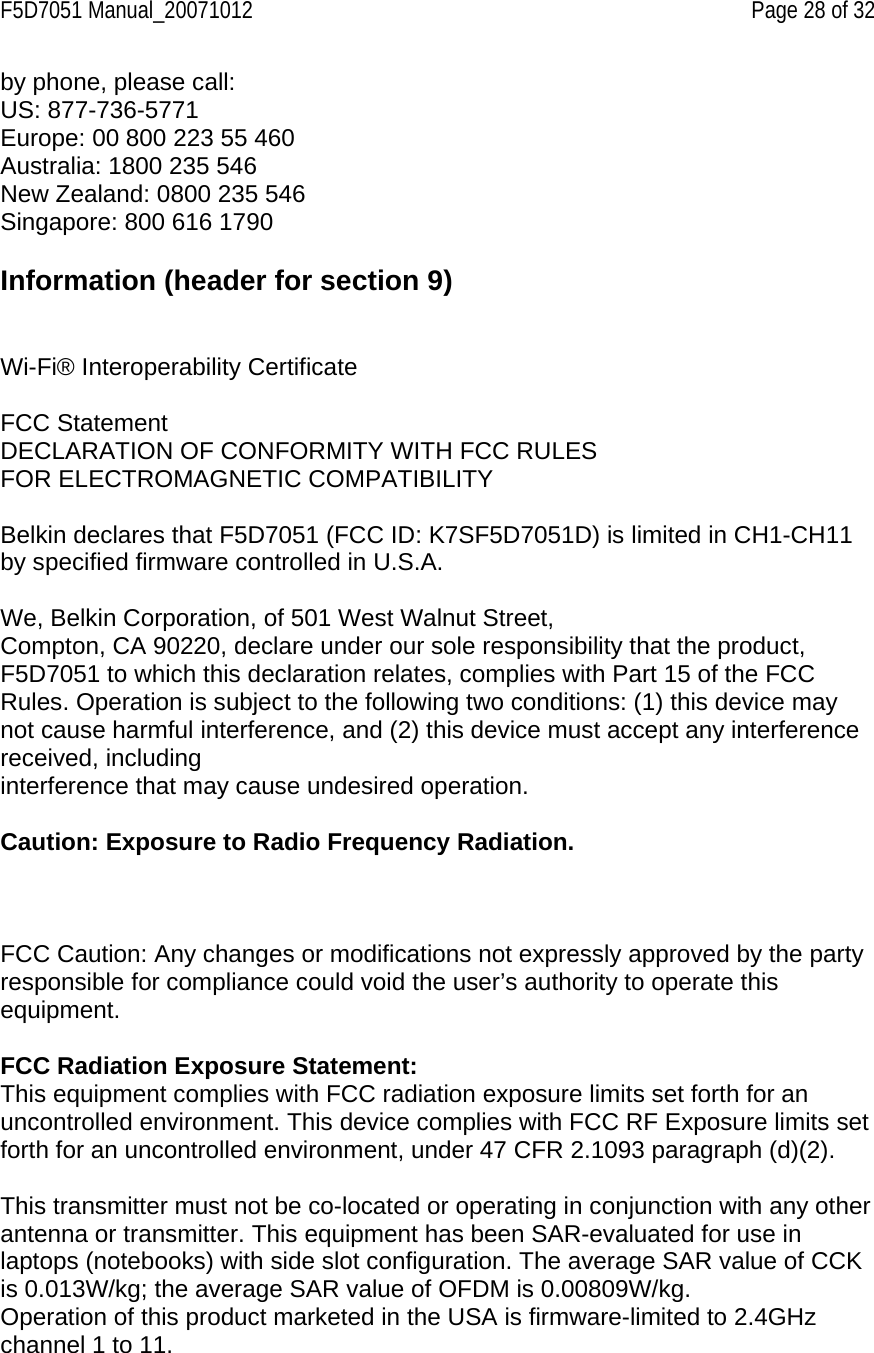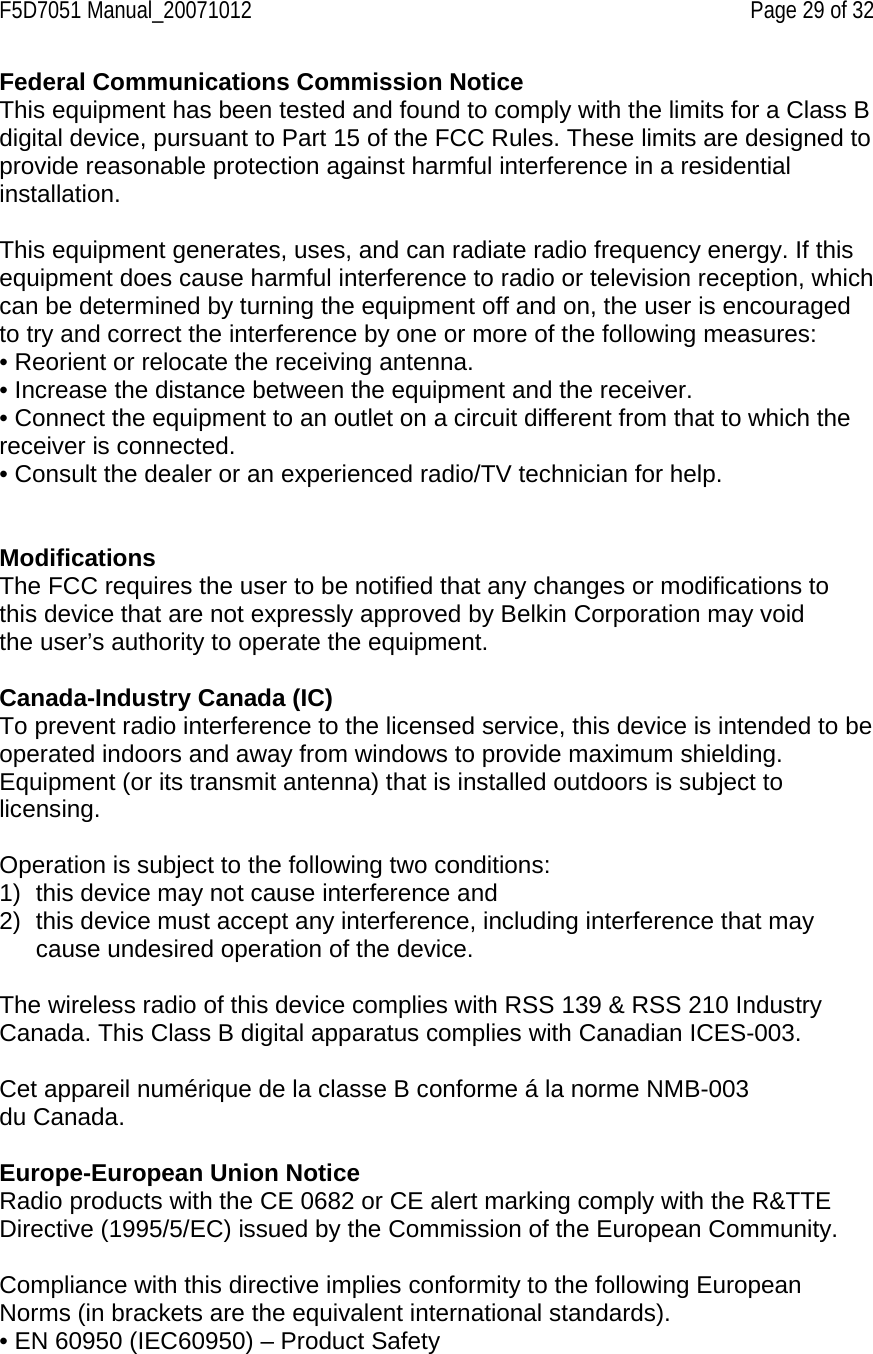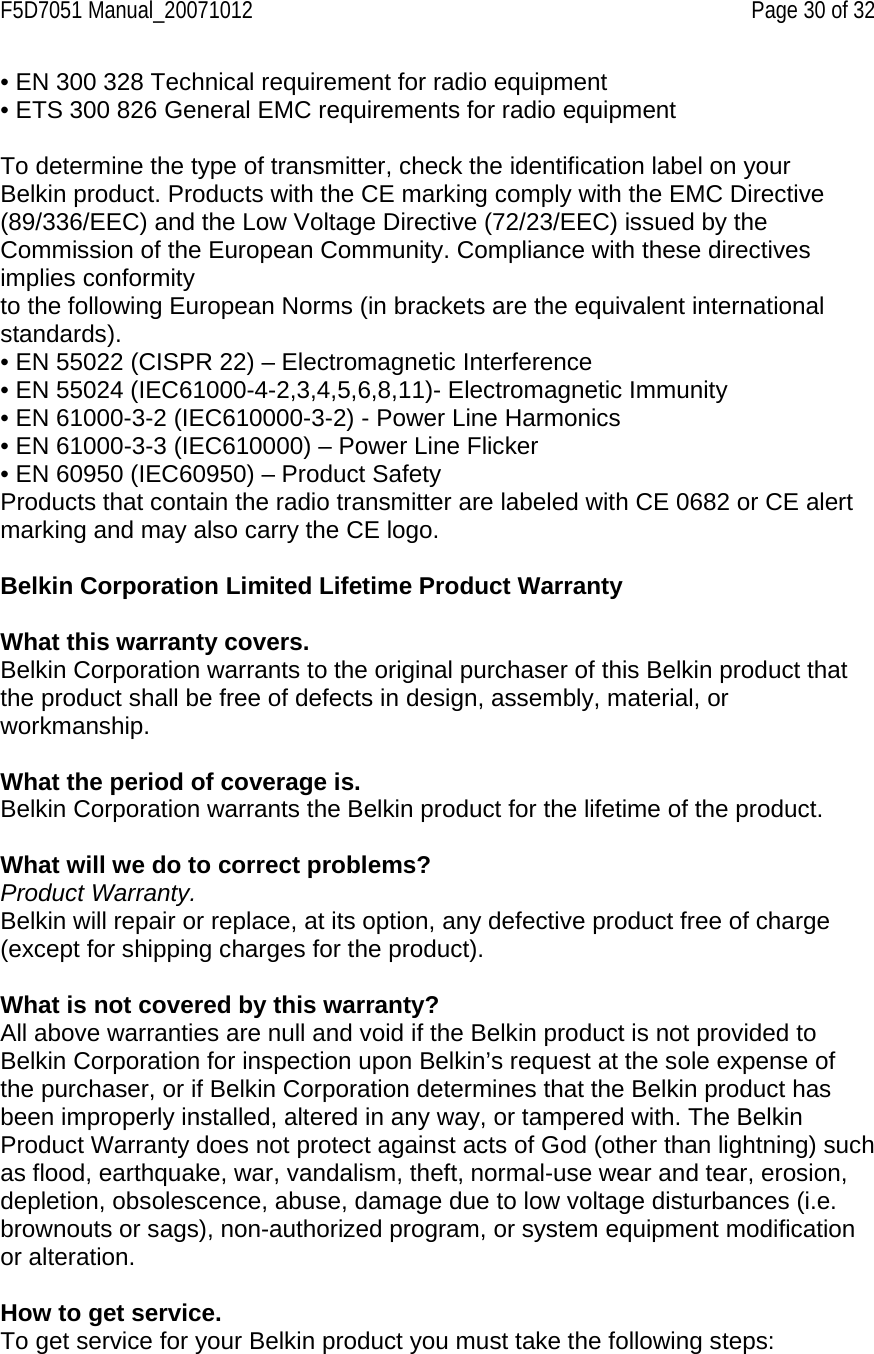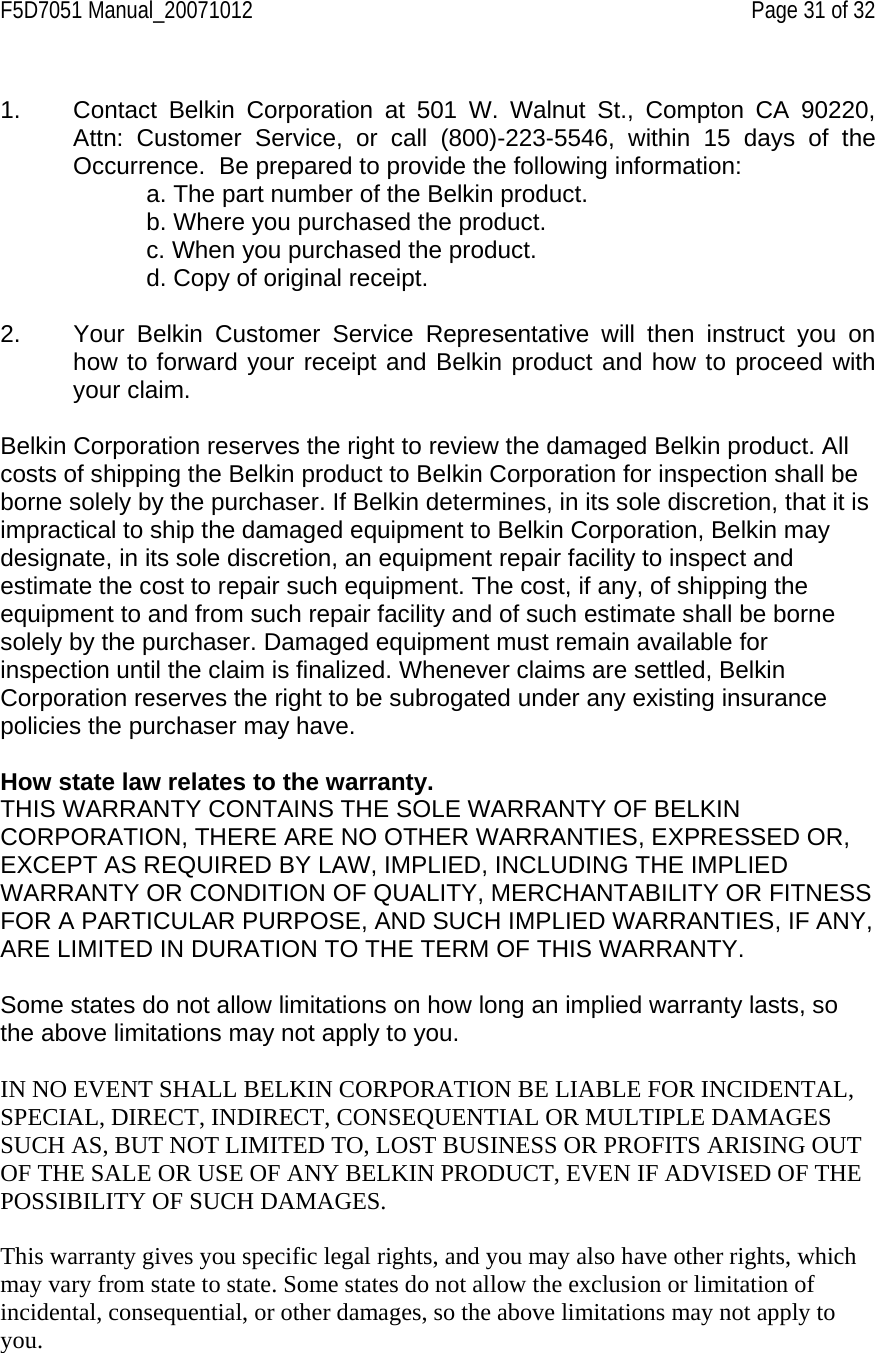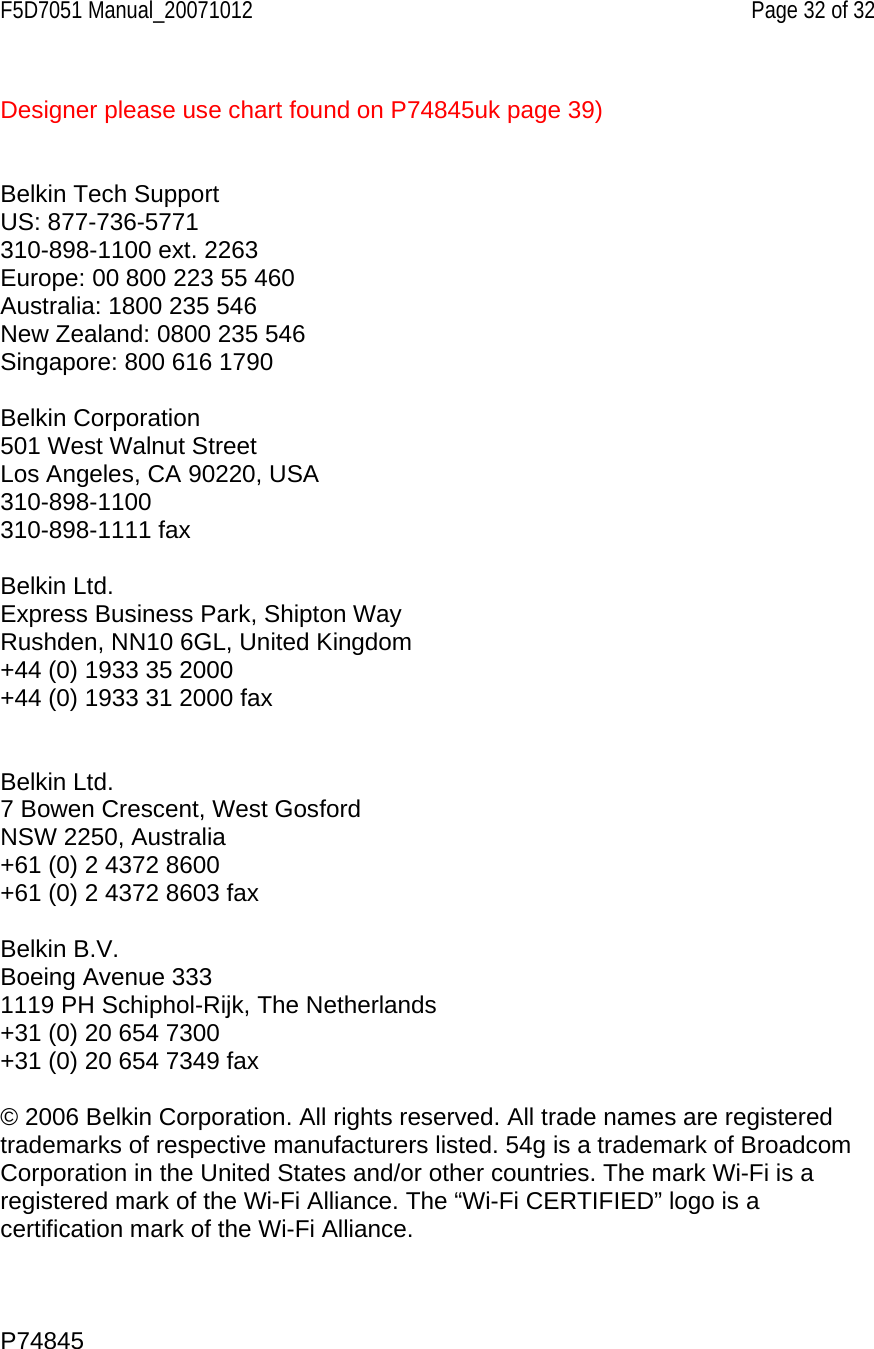Belkin F5D7051D Wireless G Plus USB Network Adapter User Manual
Belkin International, Inc. Wireless G Plus USB Network Adapter
Belkin >
Contents
- 1. user manual model 1
- 2. user manual model 2
- 3. user manual model 3
user manual model 3
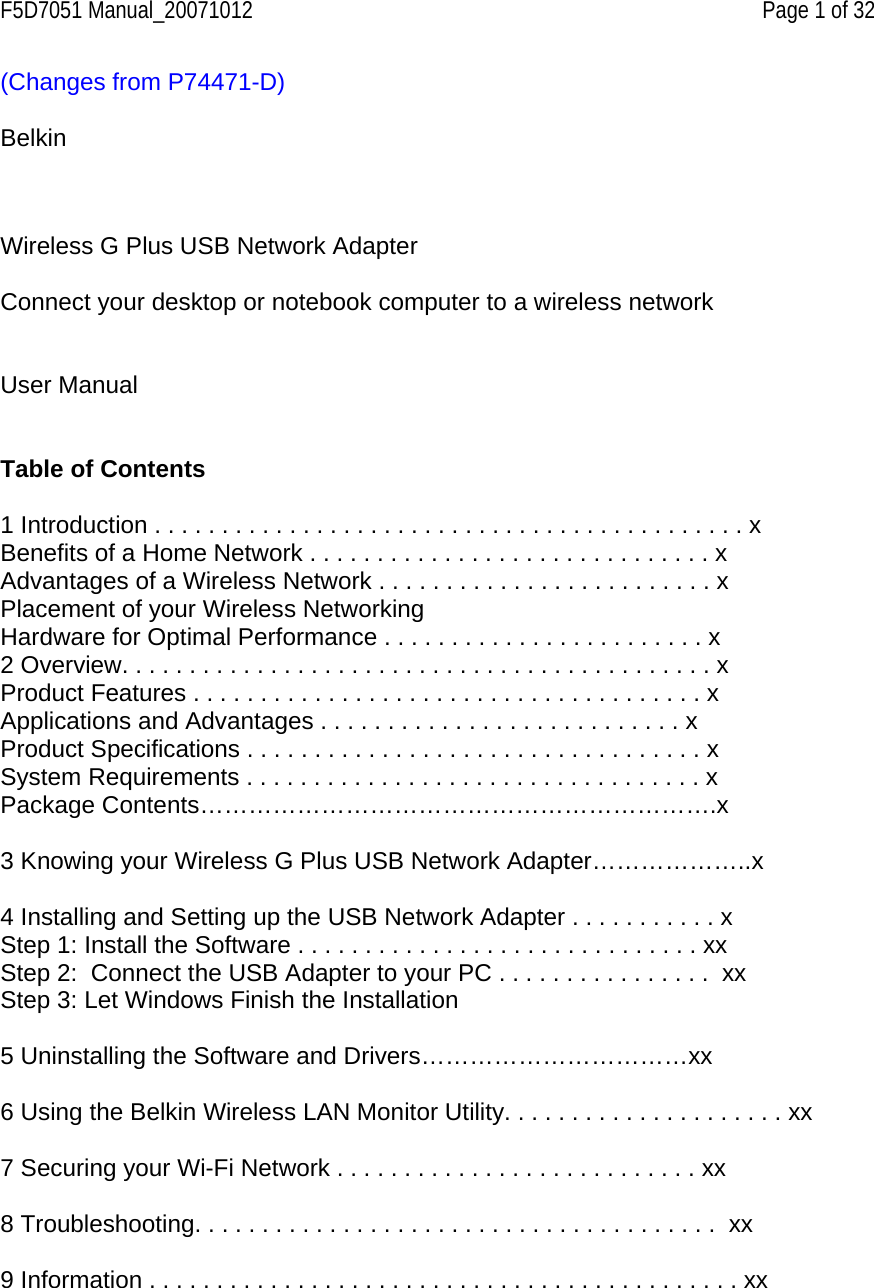
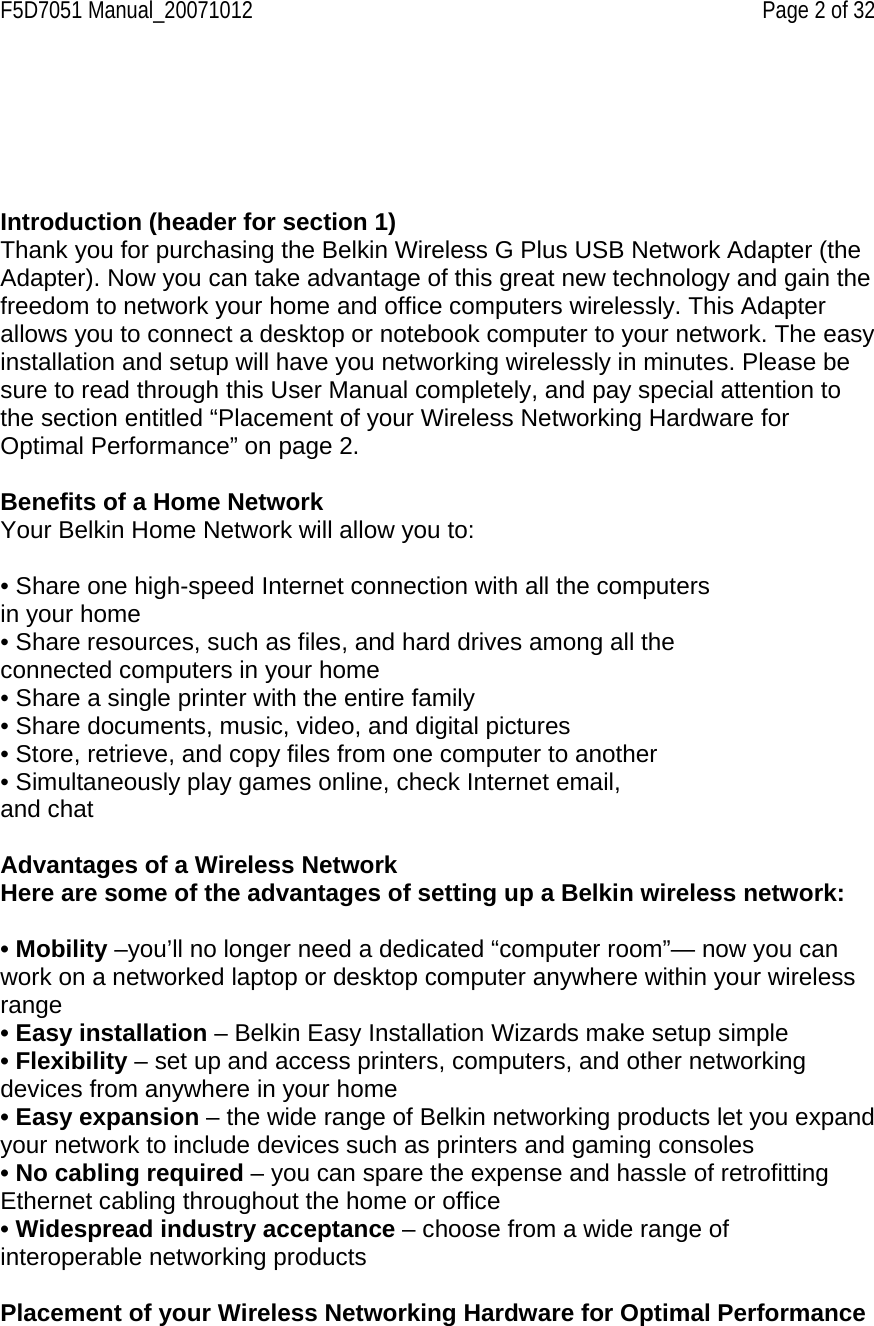
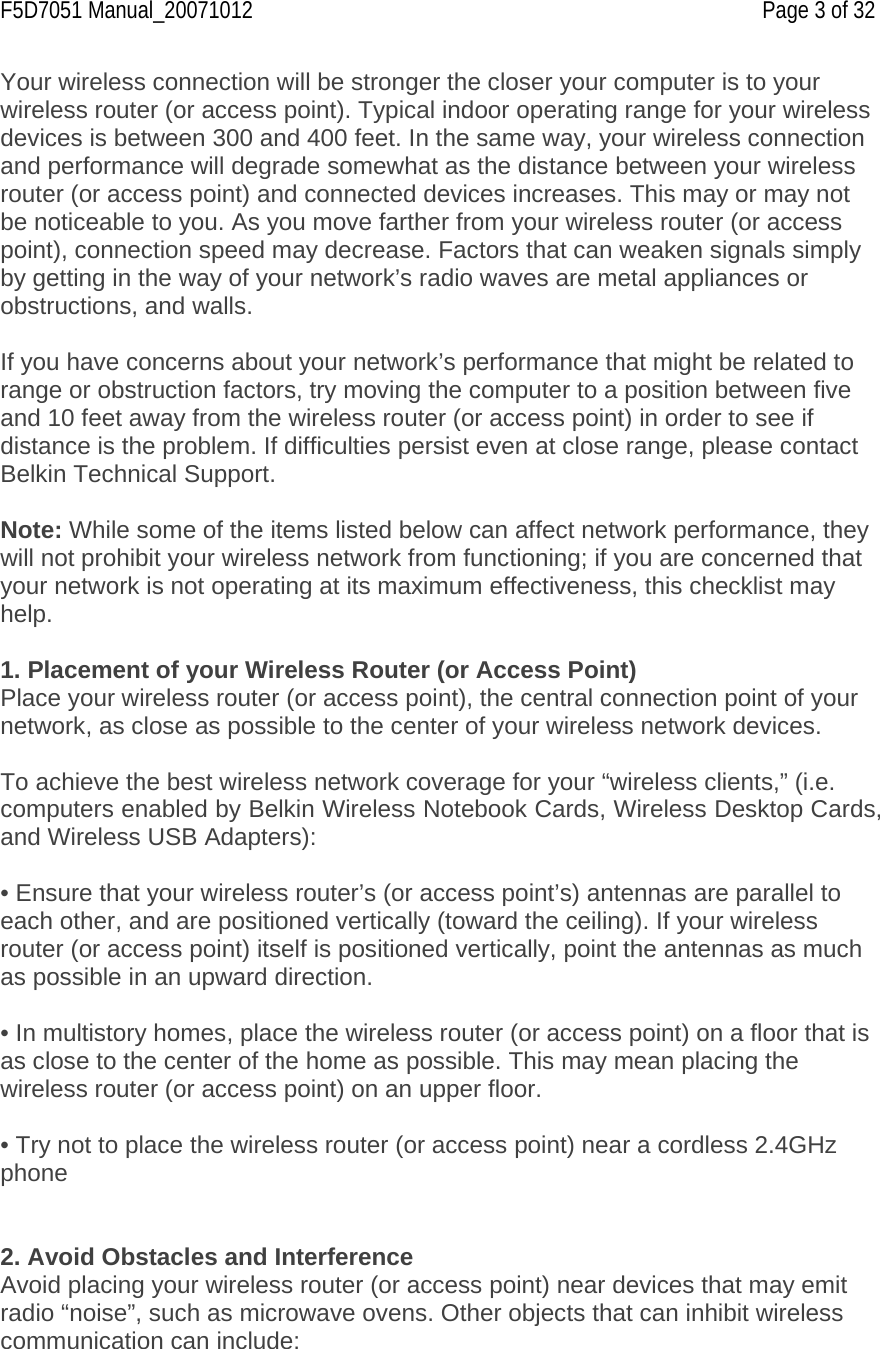
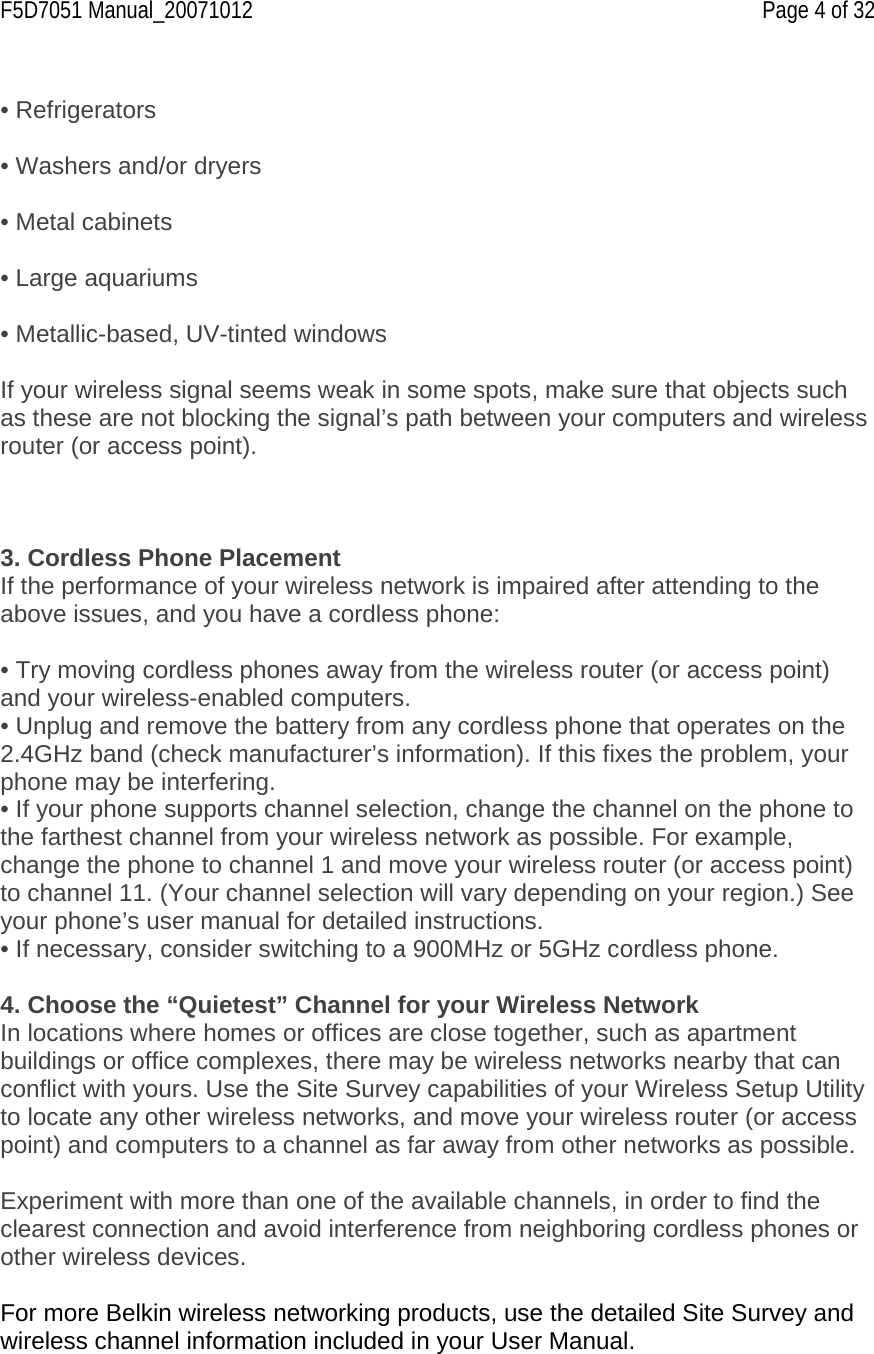
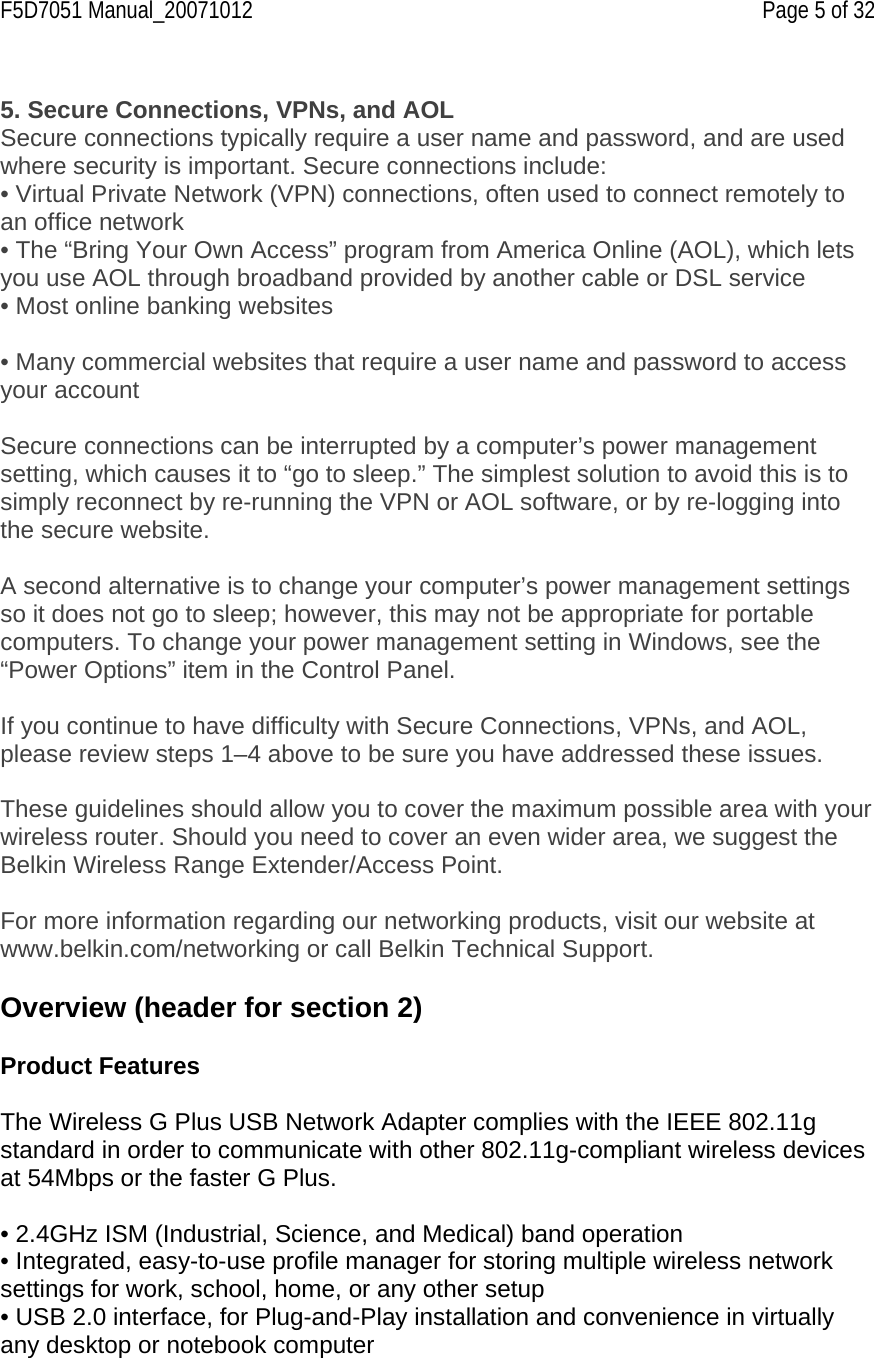
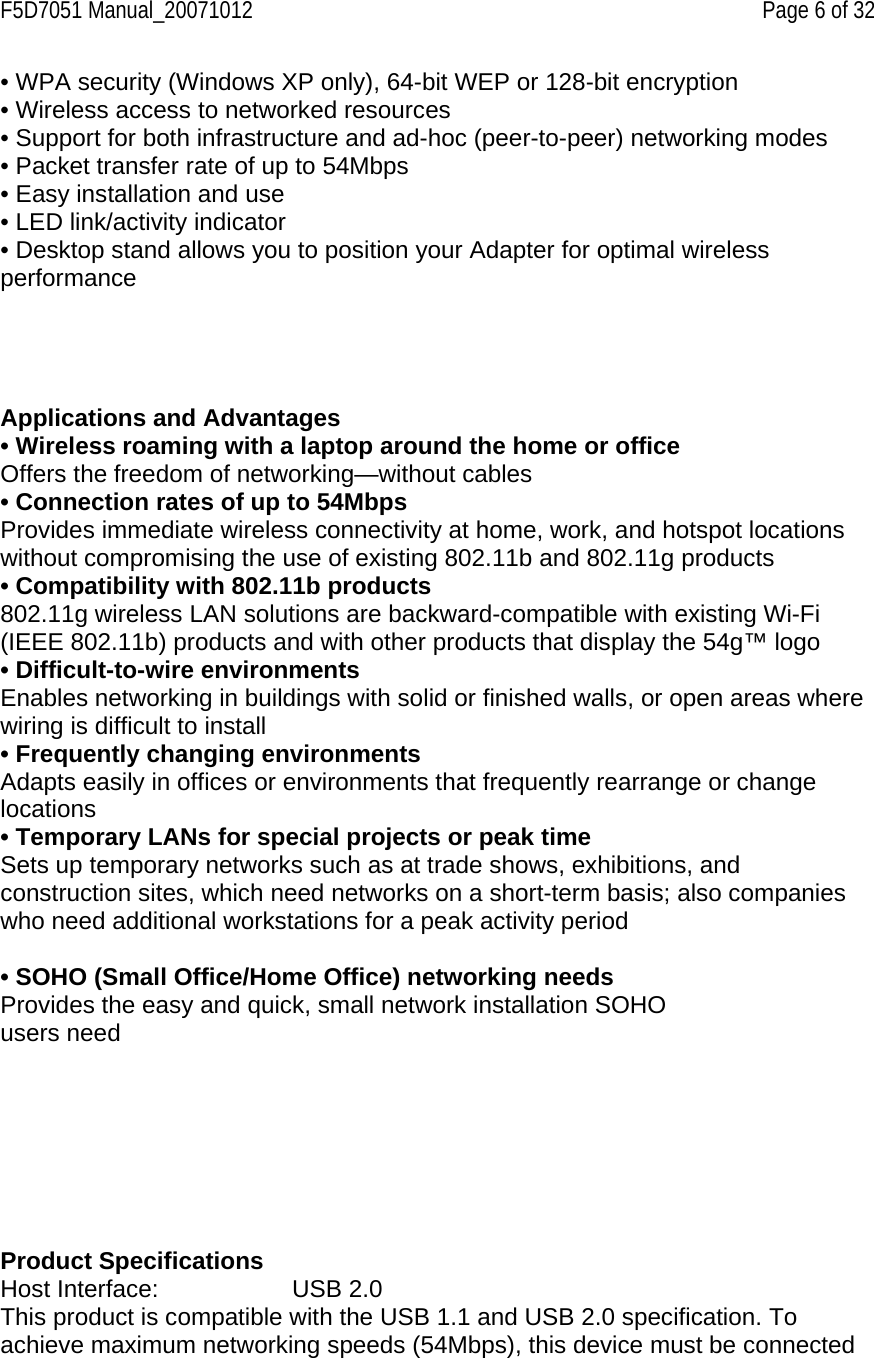
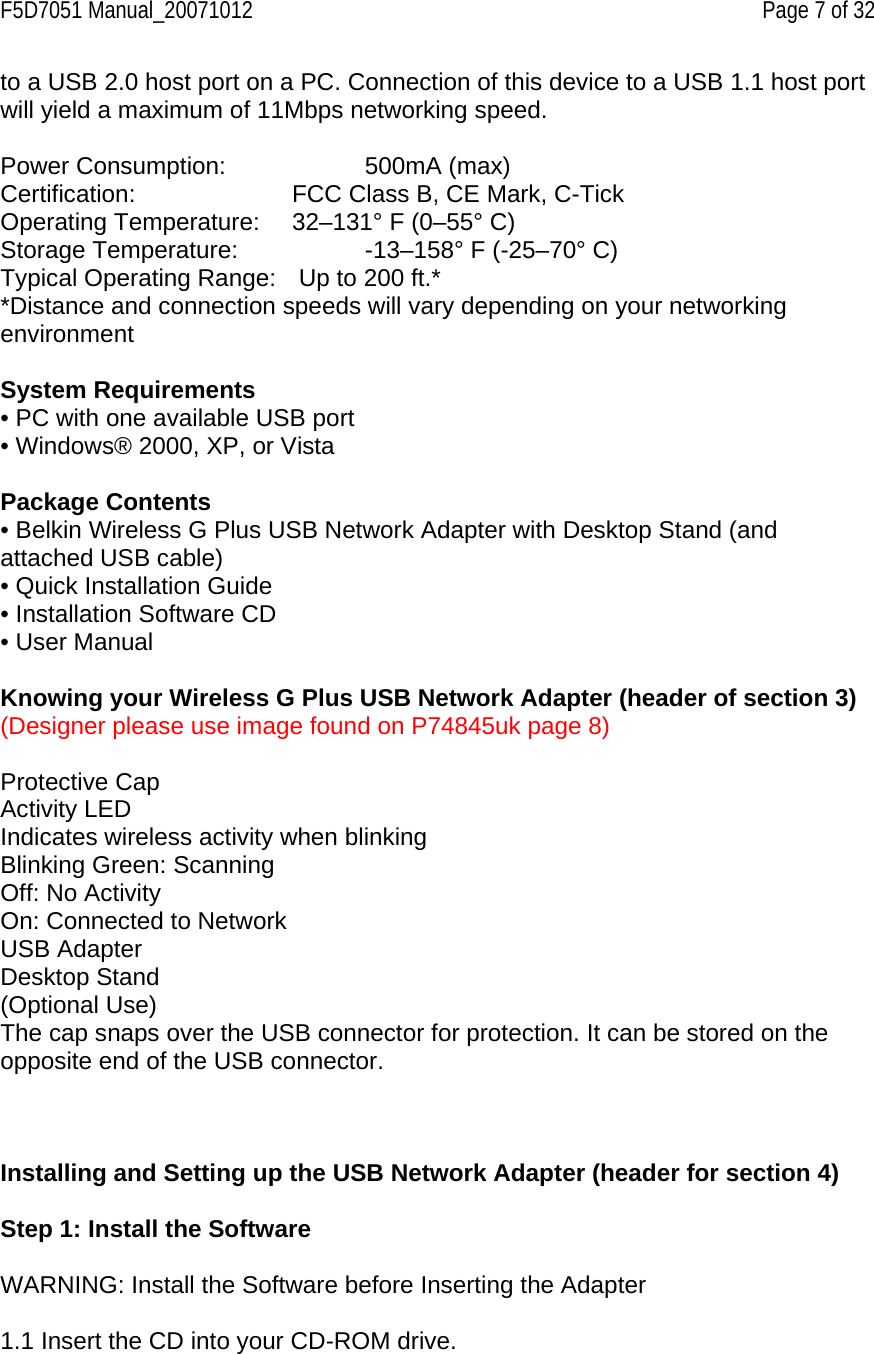
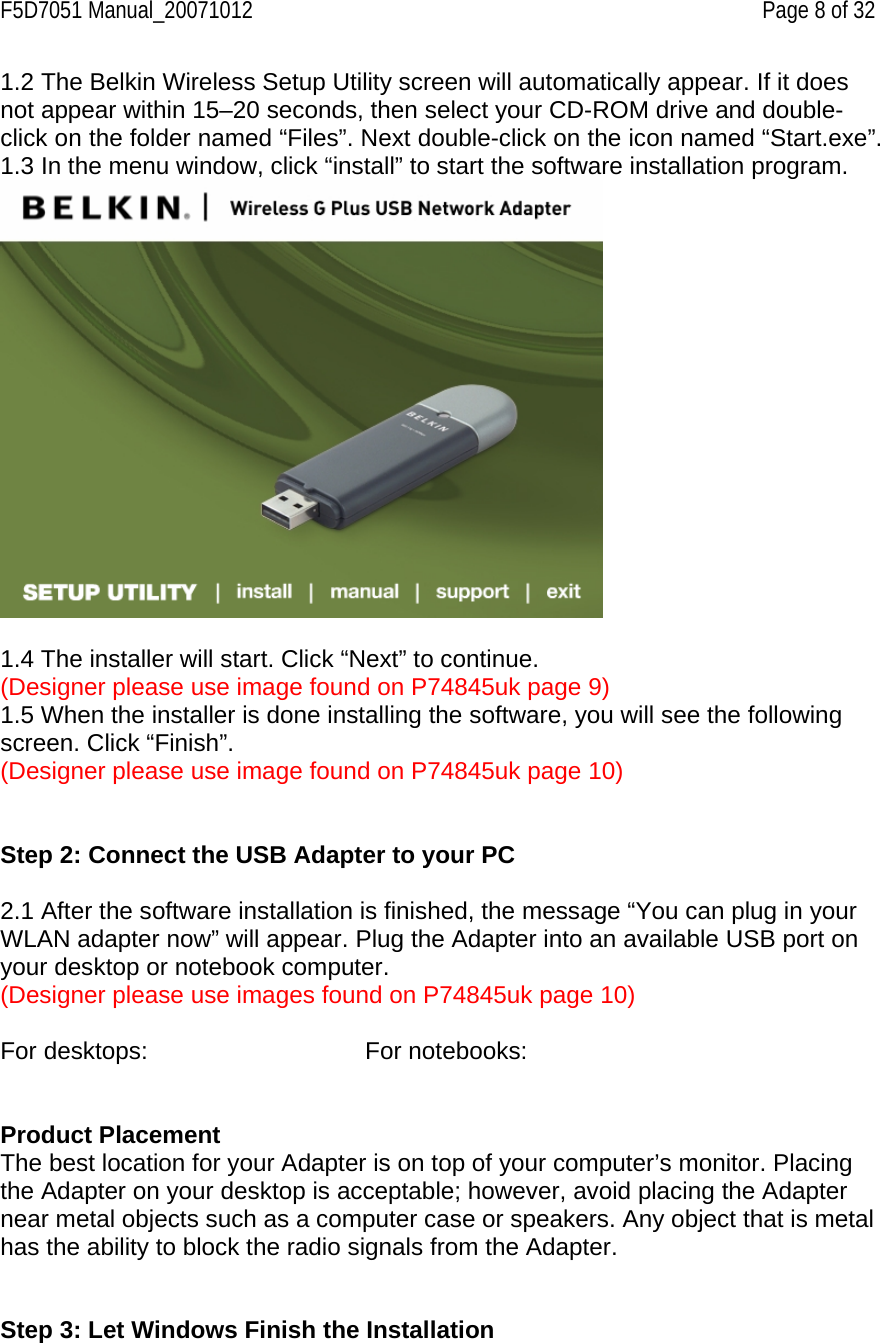
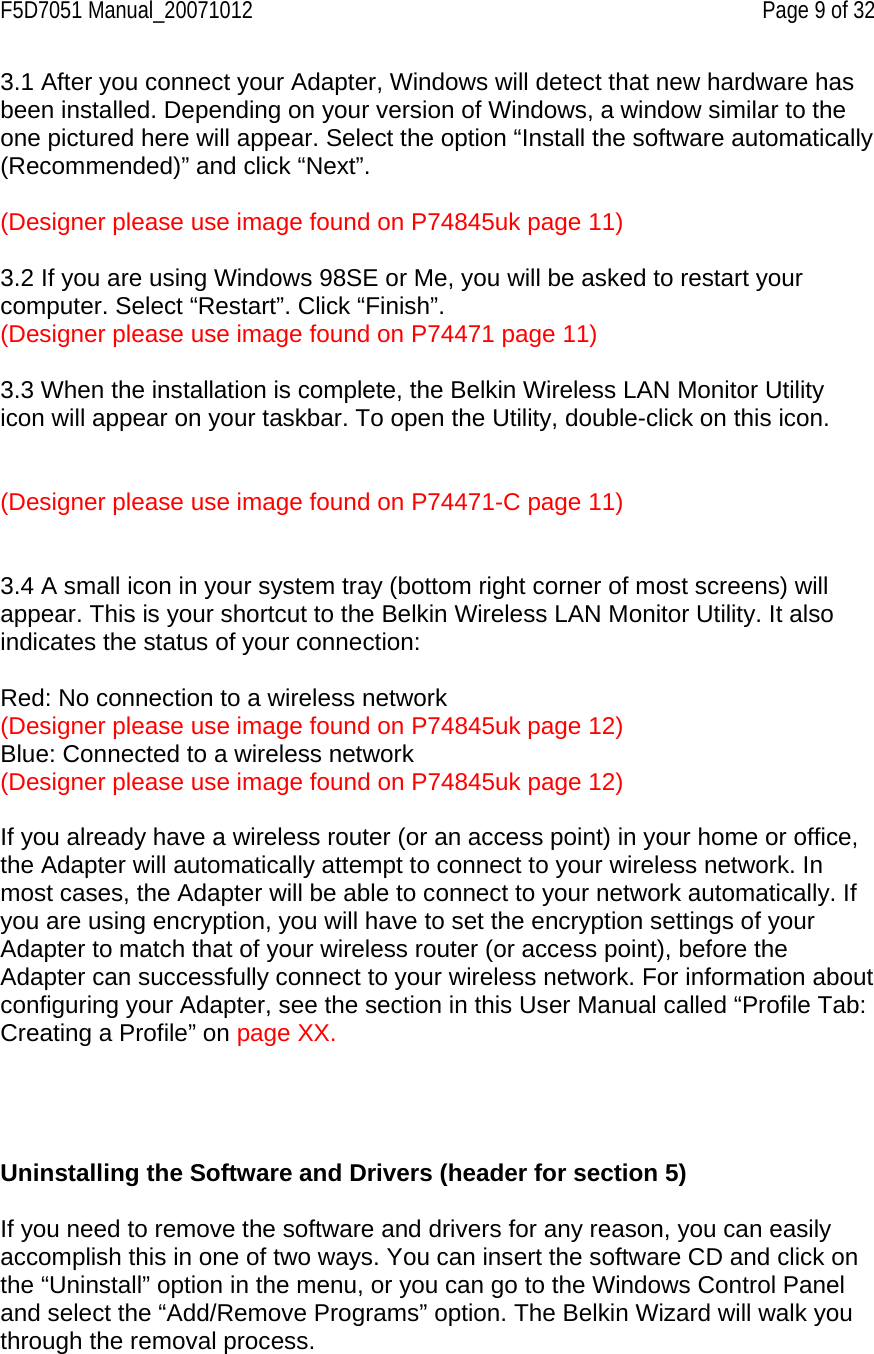
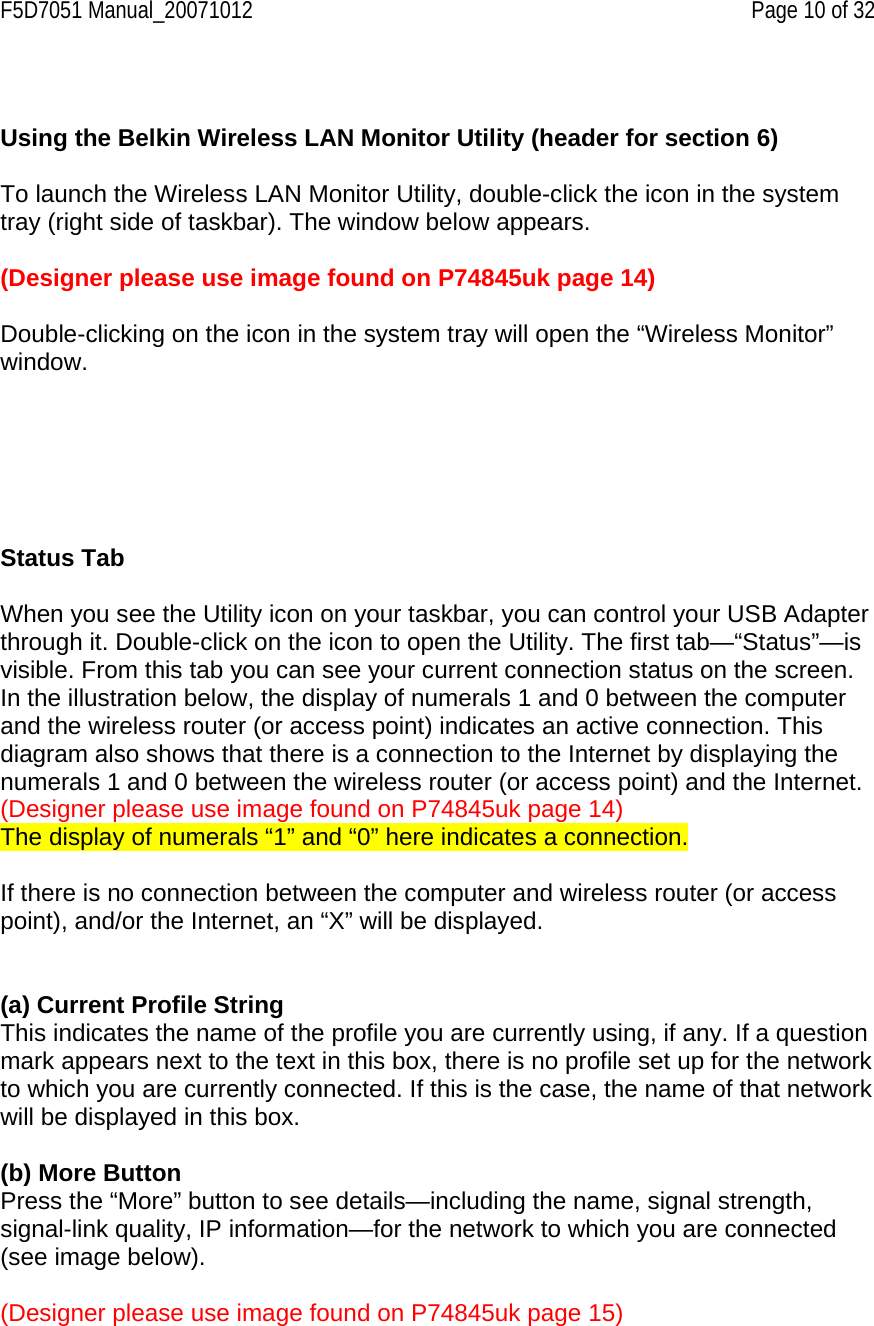
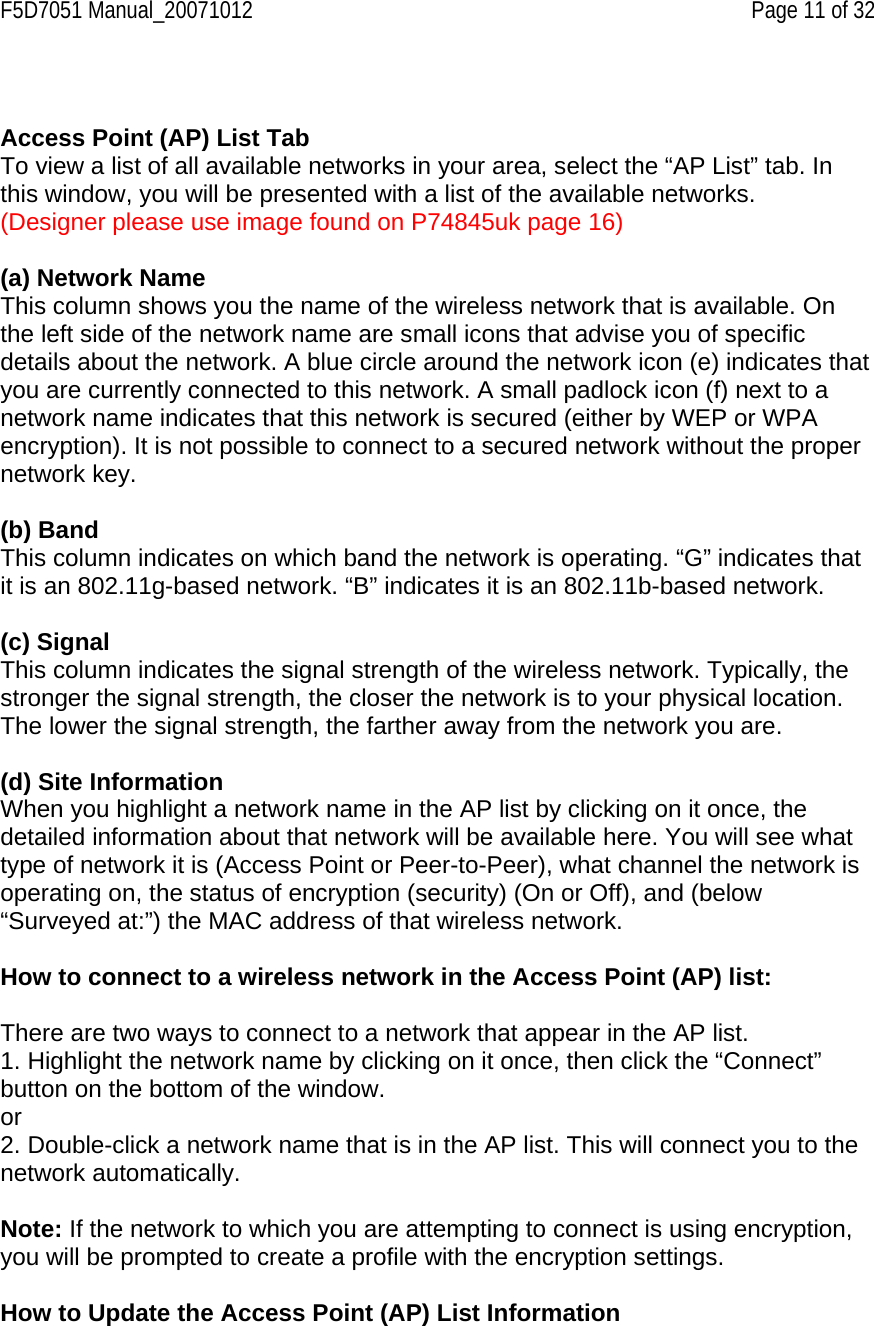
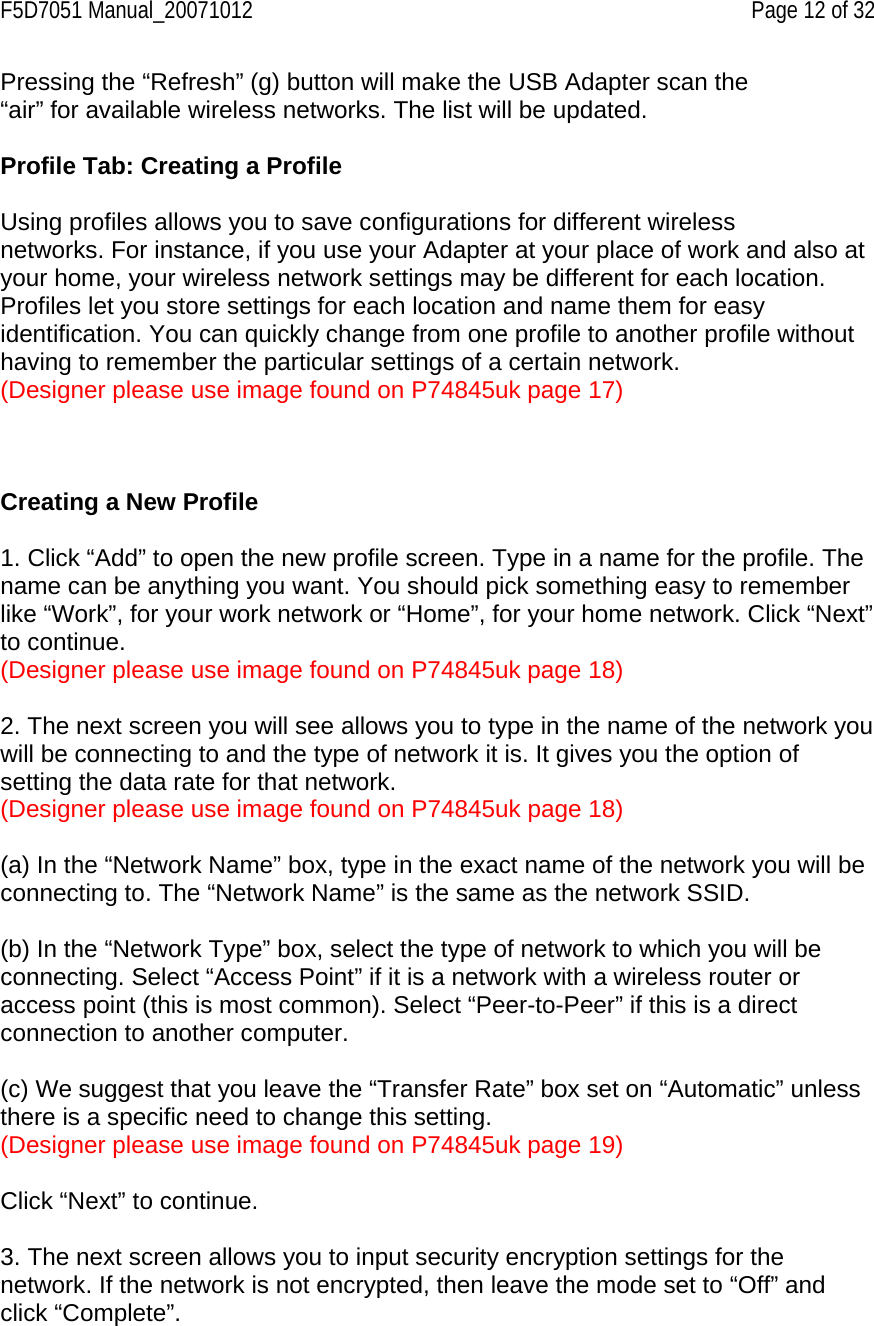
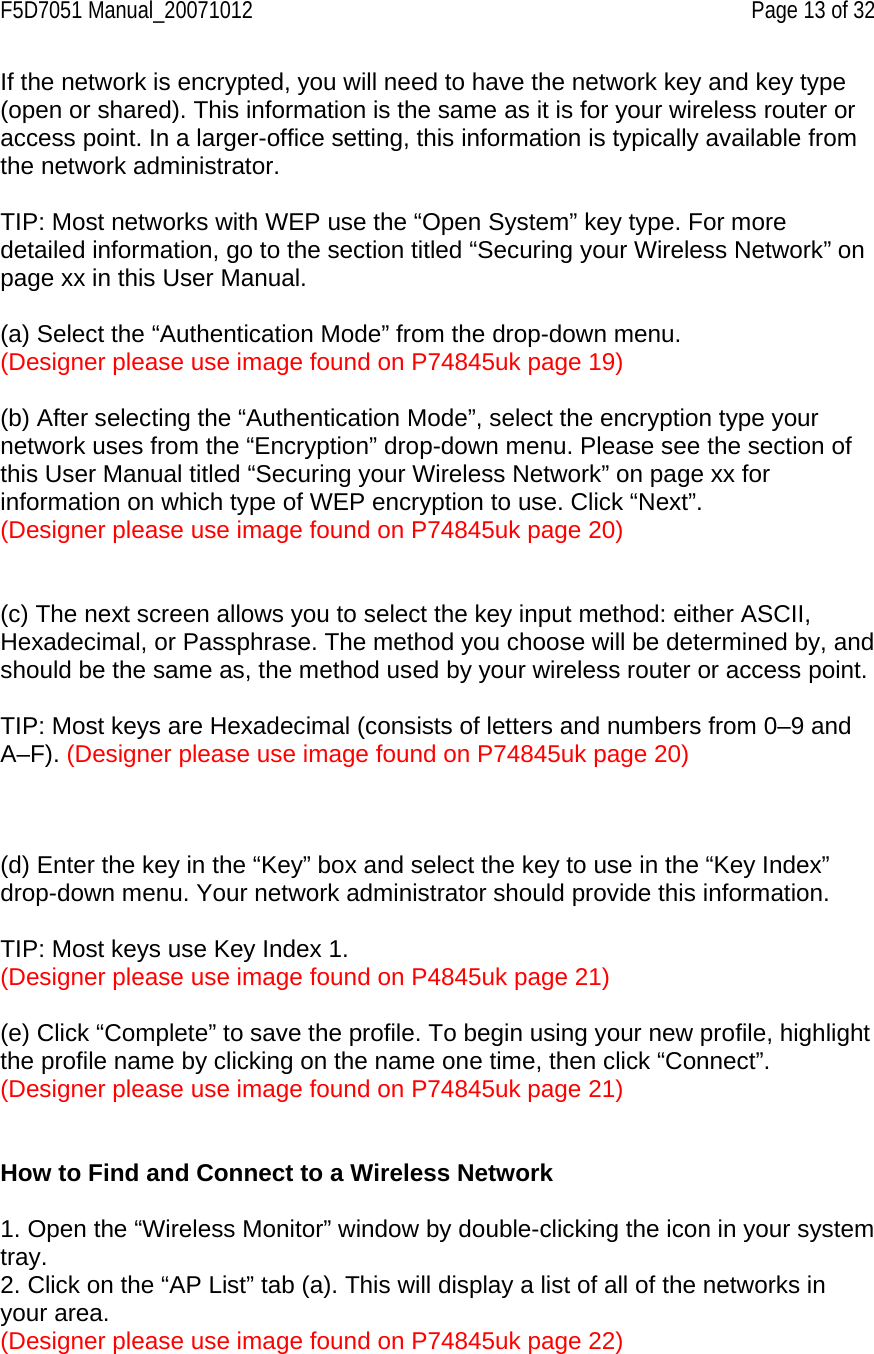
![F5D7051 Manual_20071012 Page 14 of 32 3. Double-click on the network to which you want to connect. A blue circle (b) (Designer please use image found on P74845uk page 22) should appear around the network icon next to the name of the network you selected. This means you are connected to the network. If the network is using encryption security, you will be prompted to make a profile for that network in order to connect. See the section of this User Manual called “Profile Tab: Creating a Profile” on page xx [fill in correct page no.] for information. Windows XP Users If you are using Windows XP, please read this section. (Designer please bold text) Windows XP integrates a wireless management utility referred to as Windows XP Wireless Zero Configuration service (WZC). The WZC can be used to control your Adapter or you can use the Belkin Wireless LAN Monitor Utility. We suggest that you use the Belkin Utility to control your Adapter. If you choose to use the WZC, directions for operation of the WZC are available in the Windows XP help file. When you first install the Adapter, the Belkin Utility will be enabled. If you want to disable the Belkin Utility in order to use the WZC, follow the steps below to disable the Belkin Utility. Disabling the Windows Zero Configuration (WZC) in Windows XP 1. Right-click on the system tray icon. (Designer please use image found on P74845uk page23) 2. In the menu, select “Enable Windows Zero Configuration (WZC)”. (Designer please use image found on P74471-C page 23) 3. To enable the Belkin Utility, right-click on the system tray icon. 4. In the menu, select “Disable Windows Zero Configuration (WZC)” (Designer please use image found on P74471-C page 23) Setting up Windows XP Wireless Network Utility to use WPA-PSK In order to use WPA-PSK, ensure that you are using “Windows Wireless Network Utility” by doing the following: 1. Right-click on “Wireless Network Connection” and select “Properties”. 2. Clicking on the “Wireless Networks” tab will display the following screen. Ensure the “Use Windows to configure my wireless network settings” box is checked.](https://usermanual.wiki/Belkin/F5D7051D.user-manual-model-3/User-Guide-854548-Page-14.png)
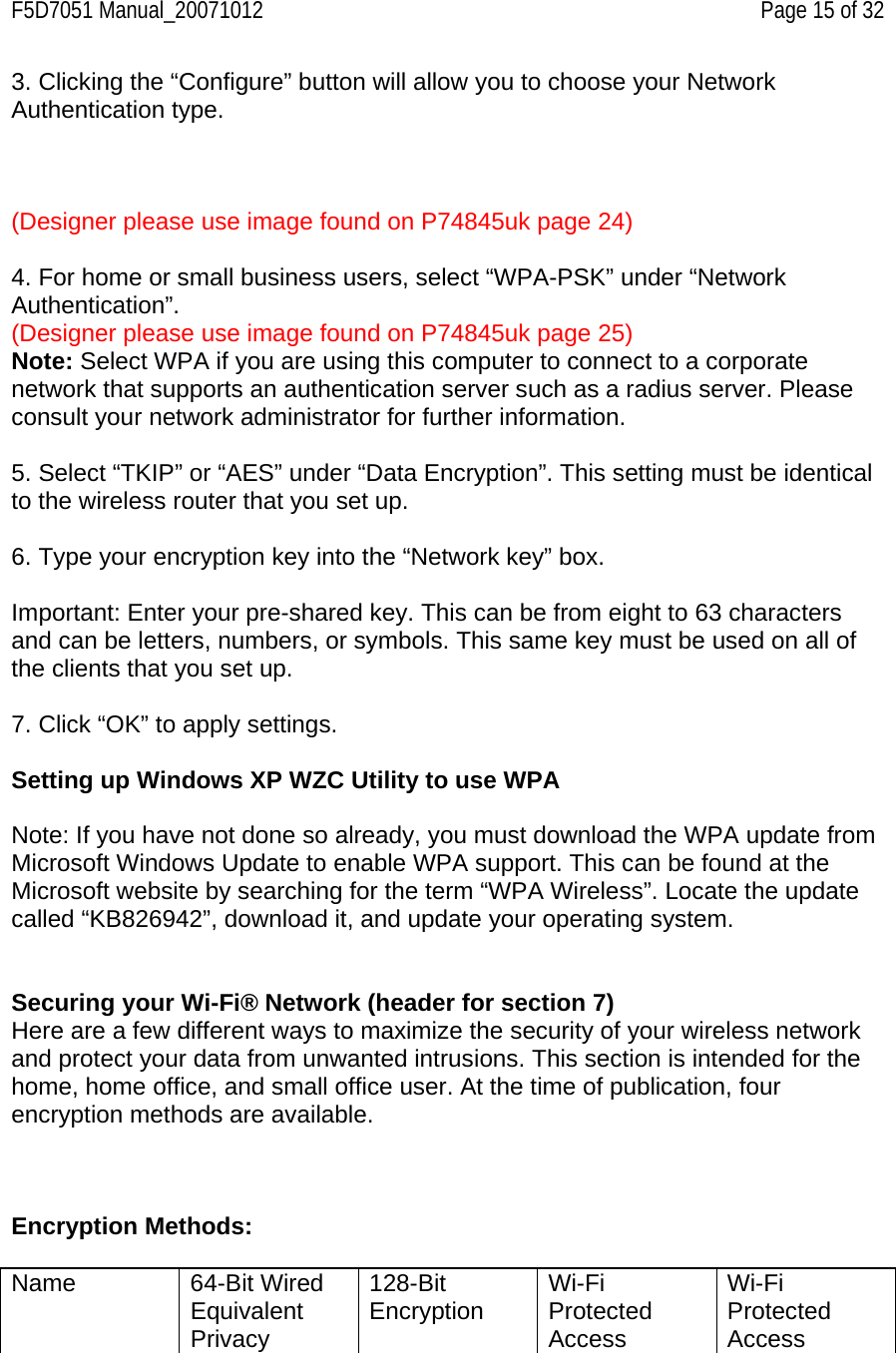
![F5D7051 Manual_20071012 Page 16 of 32 Acronym 64-bit WEP 128-bit WPA-TKIP WPA-AES Security Good Better Best Best Features Static keys Static keys Dynamic key encryption and mutual authenticationDynamic key encryption and mutual authentication Encryption keys based on RC4algorithm (typically 40-bit keys) Added security over 64-bit WEP using a key length of 104 bits, plus 24 additional bits of system- generated data TKIP (Temporal Key Integrity Protocol) added so that keys are rotated and encryption is strengthened AES (Advanced Encryption Standard) does not cause any throughput loss Securing your Wireless Network Most wireless products ship with security turned off. This means that once you have your network working, you may need to activate WEP or WPA and make sure all your wireless devices are sharing the same network key. The following diagram shows the effect of not having the correct network key throughout your network. (Designer please use chart found on P74845uk page 27) [image – computer] Network Key= MyPassword [image – router] Network Key= MyPassword [image – computer] Network Key= MyPassword [image – computer] Network Key= WRONG Password The Adapter cannot access the network because it uses a different network key than the one configured on the wireless router.](https://usermanual.wiki/Belkin/F5D7051D.user-manual-model-3/User-Guide-854548-Page-16.png)
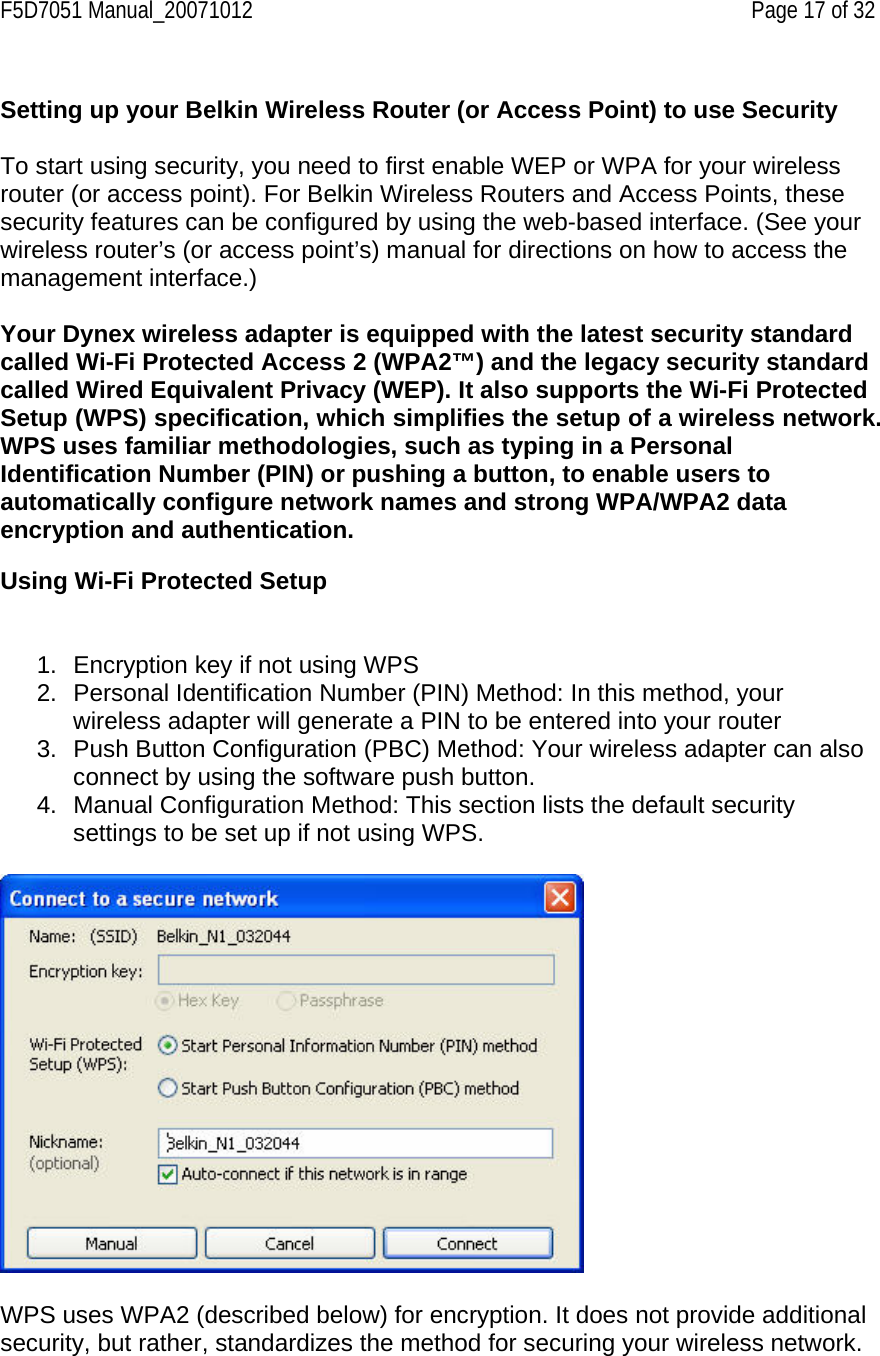
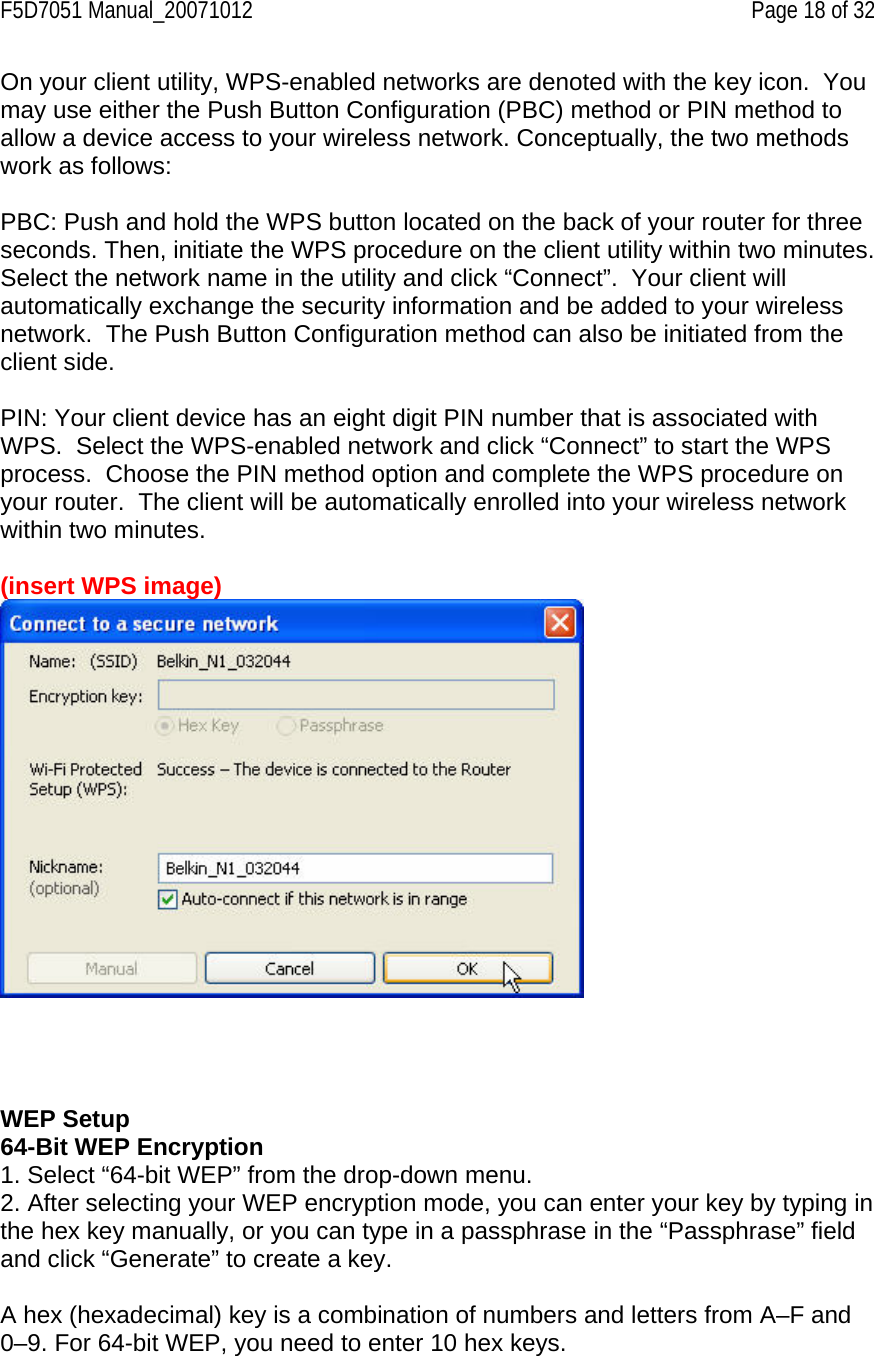
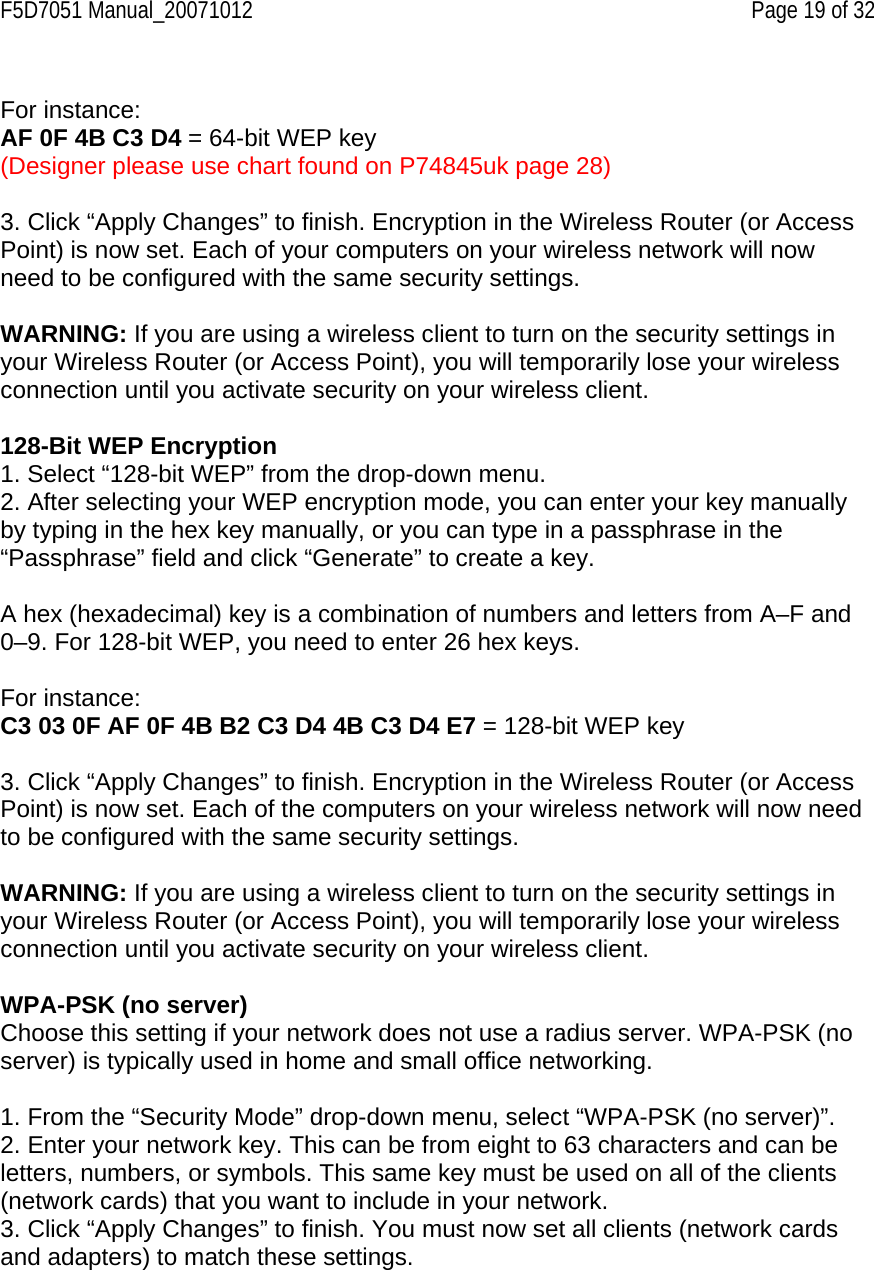
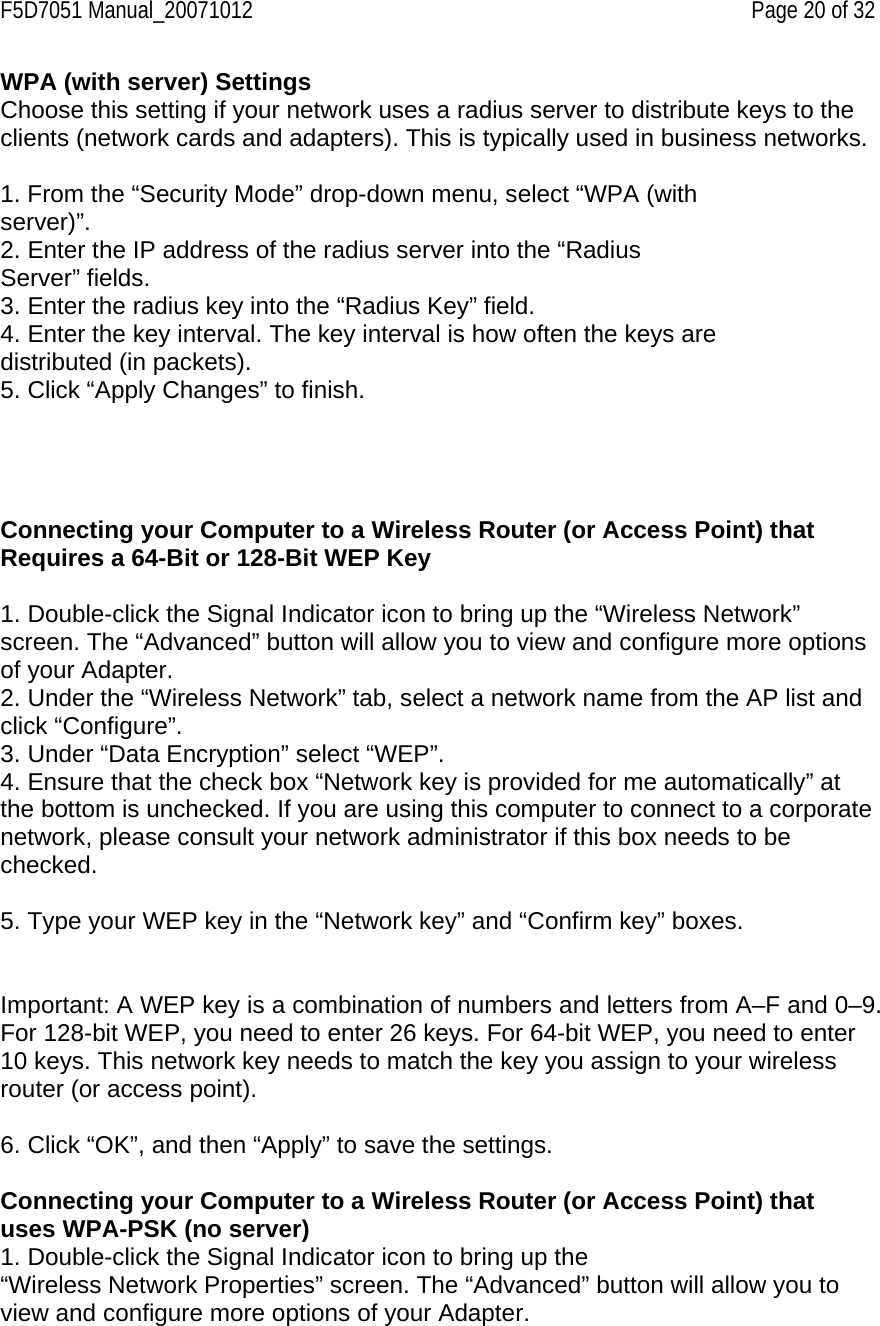
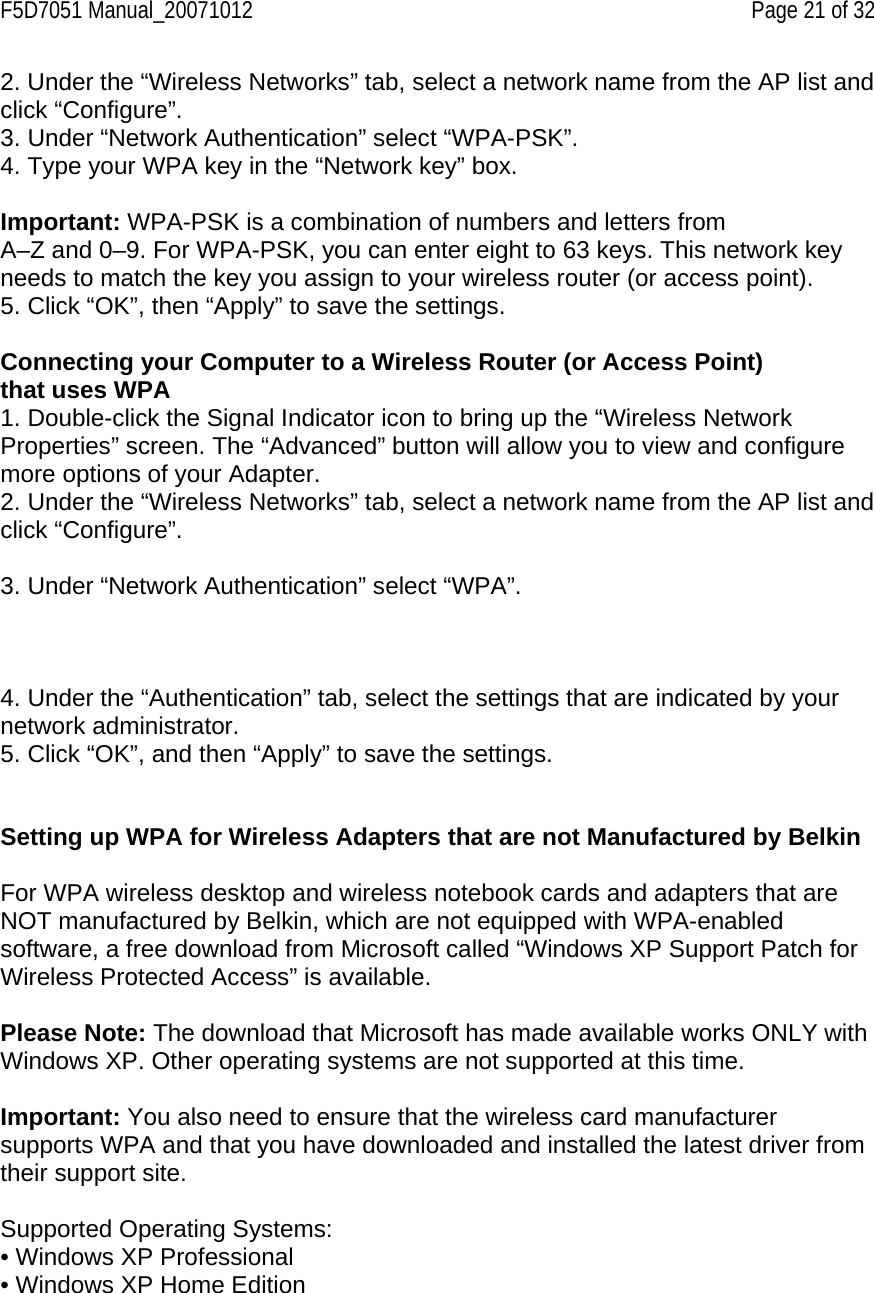
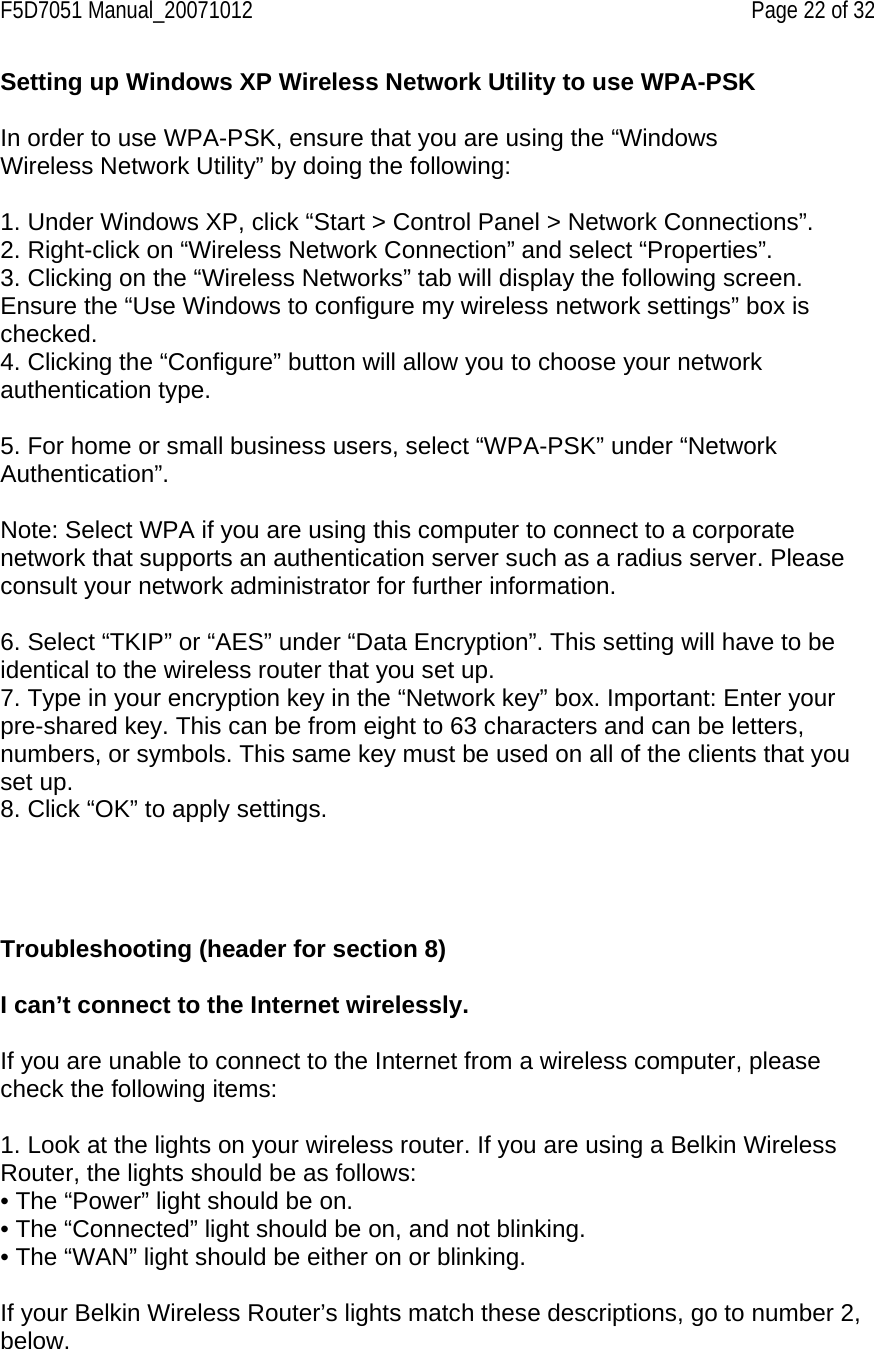
![F5D7051 Manual_20071012 Page 23 of 32 If this is NOT the case, please contact Belkin technical support. If you are not using a Belkin Wireless Router, consult that router manufacturer’s user guide. 2. Open your Wireless Setup Utility software by clicking on the icon in the system tray at the bottom right-hand corner of the screen. If you are using a Belkin Wireless Adapter, the tray icon should look like this (the icon may be red or green): (Designer please use chart found on P74845uk page 30) 3. The exact window that opens will vary depending on the model of Wireless Adapter you have; however, any of the utilities should list “Available Networks”, that is, networks to which you can connect. If you are using a Belkin Wireless G or Wireless G Plus Router, “Belkin54g” is the default name. If you are using a Belkin 802.11b Router, the default name should be “WLAN”. If you are NOT using a Belkin Router, please consult your router manufacturer’s user manual for the default name. The name of your wireless network appears in the AP list. If the correct network name is listed in the AP list, please follow the steps below to connect wirelessly: 1. Click on the correct network name in the AP list. 2. If the network has security (encryption) enabled, you will need to enter the network key. For more information regarding security, please see “Securing your Wi-Fi Network” on page XX [insert correct pg. no.] of this User Manual. 3. Within a few seconds, the tray icon in the lower right-hand corner of your screen should turn green, indicating a successful connection to the network. If you are still unable to access the Internet after connecting to the wireless network, please contact Belkin Technical Support. The name of your wireless network DOES NOT appear in the AP list. If the correct network name is not listed in the AP list in the Wireless Utility, please attempt the following troubleshooting steps:](https://usermanual.wiki/Belkin/F5D7051D.user-manual-model-3/User-Guide-854548-Page-23.png)
